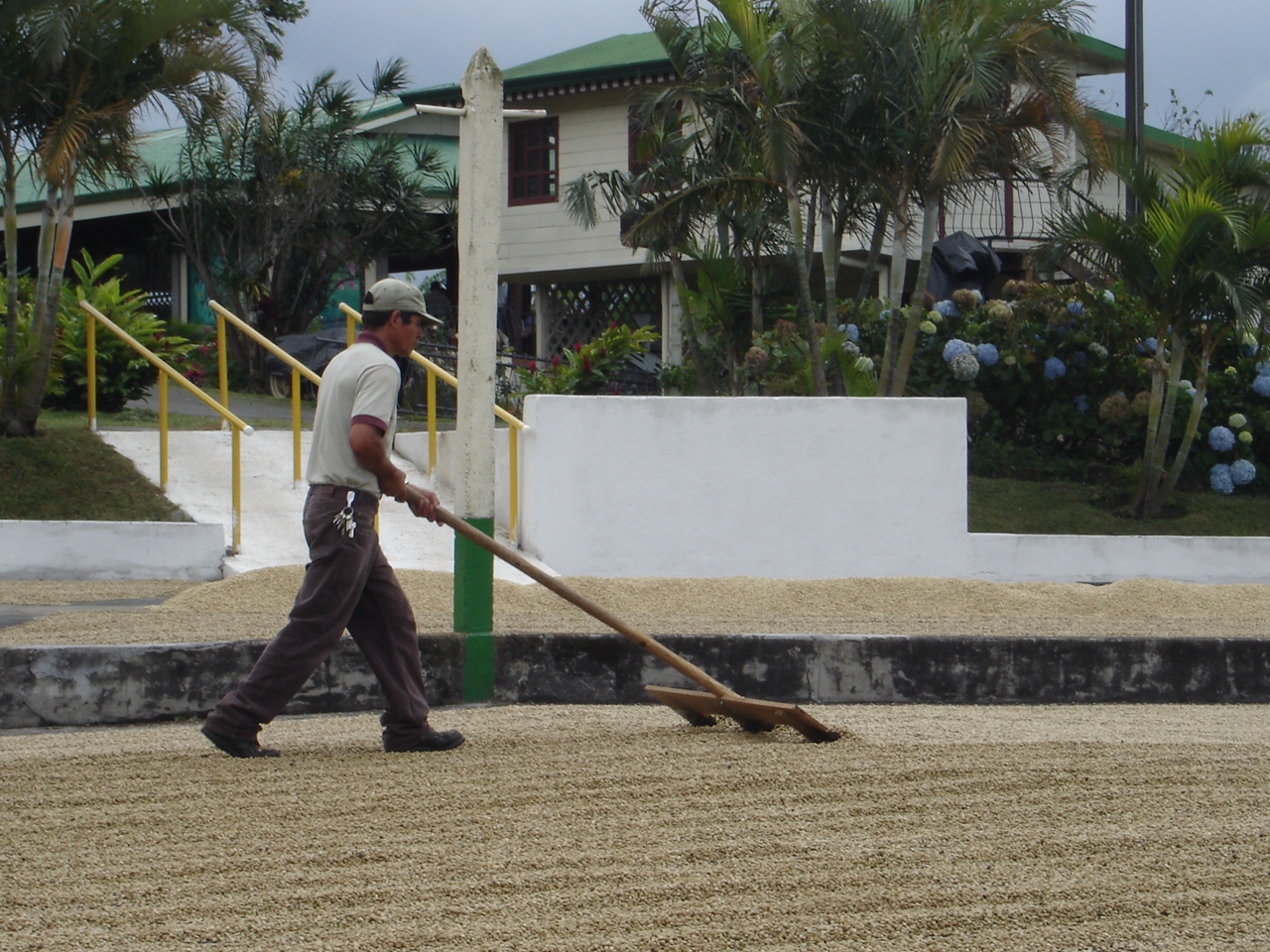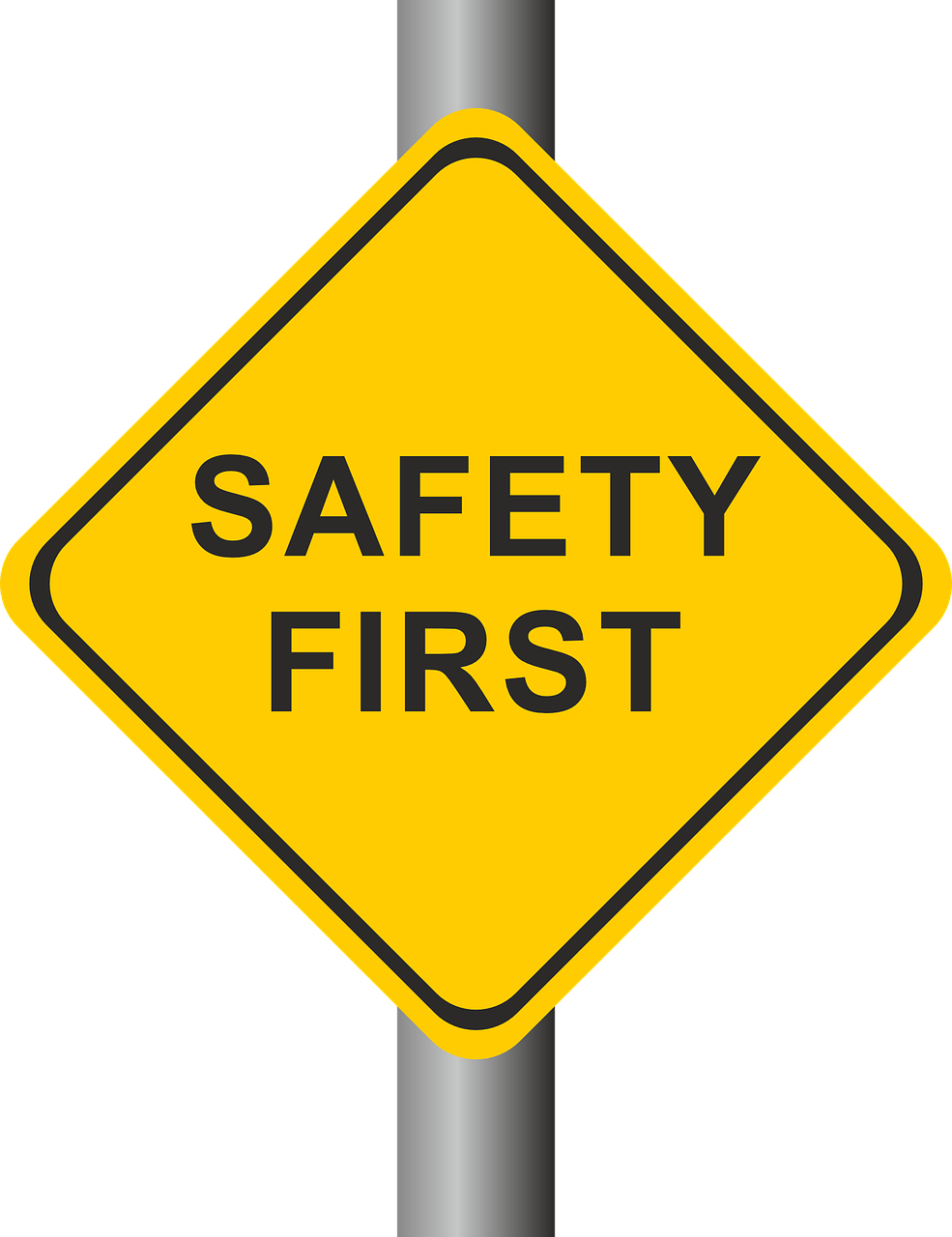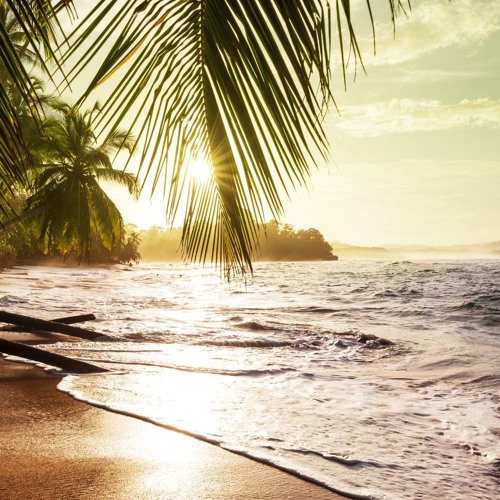When you choose among destinations to go to Costa Rica, you will repeatedly notice some choices. So aiming to give a more precise point of view, I decided to create these comparison posts that will guide you from the most popular places to the off-the-beaten pathways. This post will discuss Tamarindo Beach in the North Pacific and Manuel Antonio Beach in the Central South Pacific.
Continue readingMust-See Destinations in Costa Rica – (Part 1)
Discover the Must-See Destinations in Costa Rica; why are they so popular? Why do you find them in mostly all itineraries and vacation plans? From the tropical haven of Tortuguero to the adventurous Arenal Volcano. Explore Monteverde’s cloud forests and the sun-kissed beaches of the North and South Pacific regions.
Continue readingCosta Rica Weather Guide: Month-to-Month Breakdown by Destination
Costa Rica, a tropical paradise located in Central America, boasts a diverse climate that varies significantly from month to month. This Costa Rica weather guide will help you understand the weather patterns across different regions, ensuring you plan your trip at the perfect time.

Whether you’re planning a beach vacation, a rainforest adventure, or a cultural exploration, understanding the Costa Rican weather can help you make the most of your trip.
From the sunny beaches of the Northern Pacific to the lush rainforests of the Caribbean Coast, the weather in Costa Rica plays a crucial role in shaping your travel experiences.
Let’s get into the month-by-month breakdown of Costa Rican weather across key destinations: Caribbean Coast, Arenal Volcano Region, Central Valley, Central and South Pacific, Northern Pacific, and Monteverde.

January
General: January marks the beginning of the dry season, with sunny and warm weather and average temperatures ranging from 75°F to 90°F (24°C to 32°C).
Caribbean Coast: Expect occasional rain despite the dry season elsewhere. Temperatures are warm and humid.
Arenal Volcano Region: This area experiences its rainy season, so expect rain showers.
Central Valley: sunny and warm, with comfortable temperatures perfect for exploring San José and surrounding areas.
Central and South Pacific: Warm and mostly dry, ideal for beach activities and exploring rainforests.
Northern Pacific: sunny, warm, and dry—perfect for beachgoers.
Monteverde: The windy season, with sunny skies, wet breezes, and frequent rainbows.
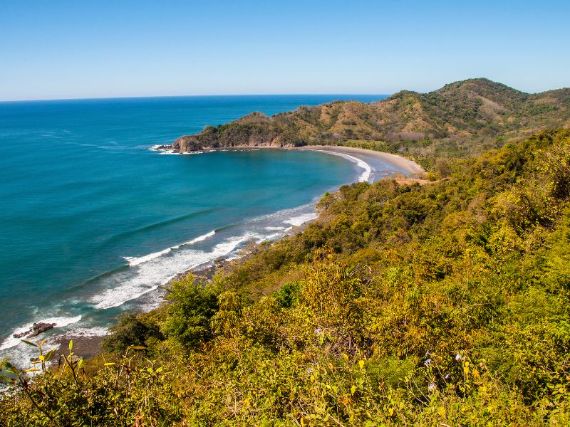
February
General: February continues with sunny days and clear skies, temperatures remaining consistent.
Caribbean Coast: occasional showers but mostly warm and humid.

Arenal Volcano Region: Still rainy, with some sunshine breaking through.
Central Valley: warm, sunny days with clear skies.
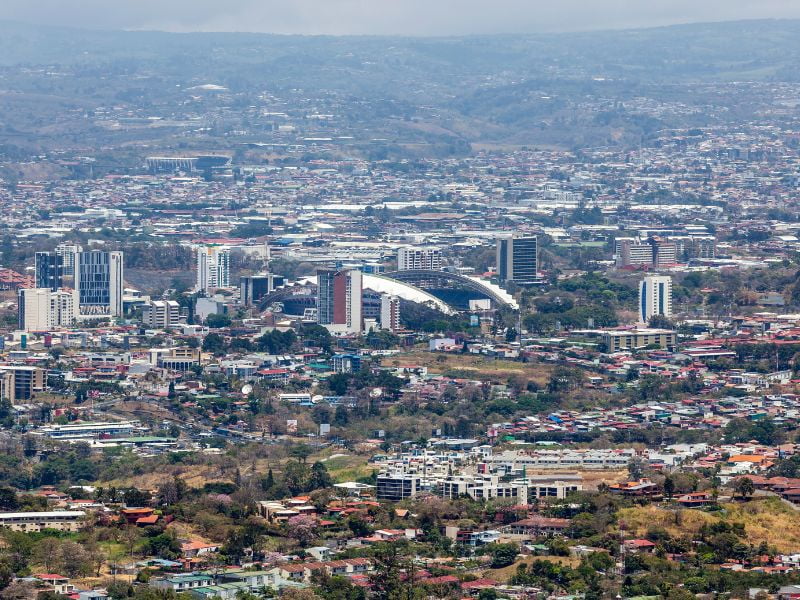
Central and South Pacific: warm, dry, and perfect for outdoor activities.
Northern Pacific: continuation of sunny and warm weather.
Monteverde: The windy season continues, with clear skies and occasional rainbows.
March
General: The tail-end of the dry season, with bright sunshine and parched landscapes.
Caribbean Coast: Warm and humid, with less rain.
Arenal Volcano Region: Transitioning to sunnier weather.
Central Valley: consistently warm and sunny.
Central and South Pacific: warm with dry conditions.

Northern Pacific: sunny and warm, excellent for beach activities.
Monteverde: The windy season winds down, maintaining sunny skies and breezy conditions.
April
General: A transitional month with mostly sunny weather and occasional showers.
Caribbean Coast: Still experiencing rainy season showers.
Arenal Volcano Region: Occasional rain with increasing sunny days.
Central Valley: warm and sunny, occasional thunderstorms.
Central and South Pacific: warm, with occasional showers.
Northern Pacific: sunny and warm, preparing for the rainy season.

Monteverde: The windy season ends, leading to wetter conditions with sunny breaks.
May
General: Beginning of the rainy season, characterized by thunderstorms and rain showers.
Caribbean Coast: Increasing rain showers.
Arenal Volcano Region: Regular thunderstorms and rain.
Central Valley: Warm, with frequent rain showers.
Central and South Pacific: regular rain showers, maintaining warm temperatures.
Northern Pacific: Start of the rainy season, with increasing showers.
Monteverde: Rainy season begins, with lush greenery and frequent rains.

June
General: Typical rainy season month, with frequent rain showers and thunderstorms.
Caribbean Coast: continuous rain showers.
Arenal Volcano Region: Frequent rain, essential for lush vegetation.
Central Valley: regular rain showers and warm temperatures.
Central and South Pacific: frequent rain showers, maintaining lush vegetation.
Northern Pacific: Regular rain showers and thunderstorms.
Monteverde: The rainy season continues, enhancing the region’s lushness.
July
General: Part of the “little summer” or “veranillo,” a drier period within the rainy season.
Caribbean Coast: Slight reduction in rain, but still humid.
Arenal Volcano Region: Morning sun with afternoon showers.

Central Valley: sunny mornings and afternoon rains.
Central and South Pacific: sunny mornings, afternoon showers.
Northern Pacific: Less rain, with drier conditions.
Monteverde: Break from heavy rains, with sunny mornings and afternoon showers.
August
General: Continues the “little summer” trend, with sunny mornings and afternoon rain showers.
Caribbean Coast: Consistent rain with sunny breaks.
Arenal Volcano Region: Mix of sun and showers.
Central Valley: warm, with afternoon rains.
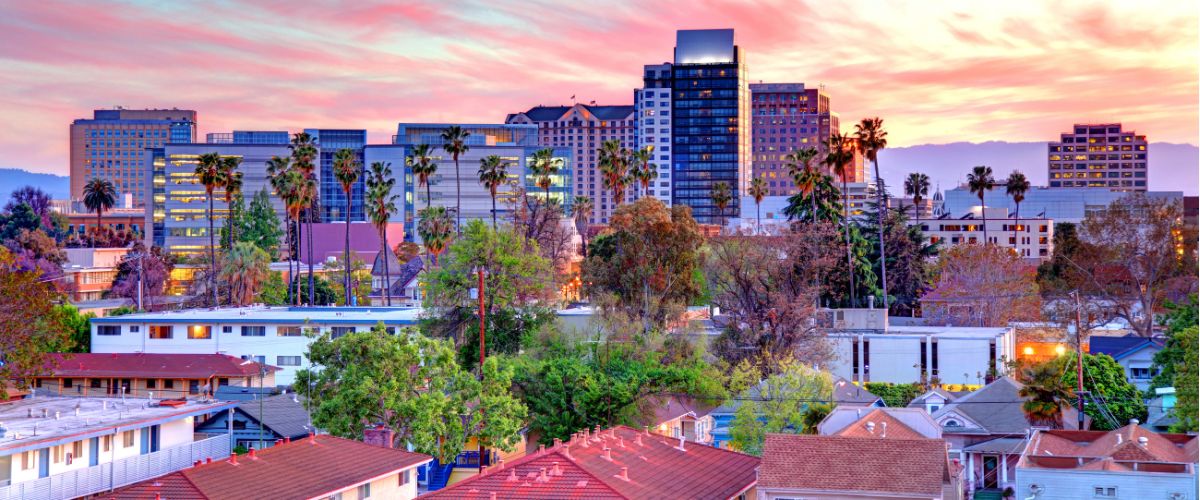
Central and South Pacific: morning sun, afternoon showers.
Northern Pacific: Drier conditions, ideal for outdoor activities.
Monteverde: Similar to July, with sunny mornings and showers later in the day.
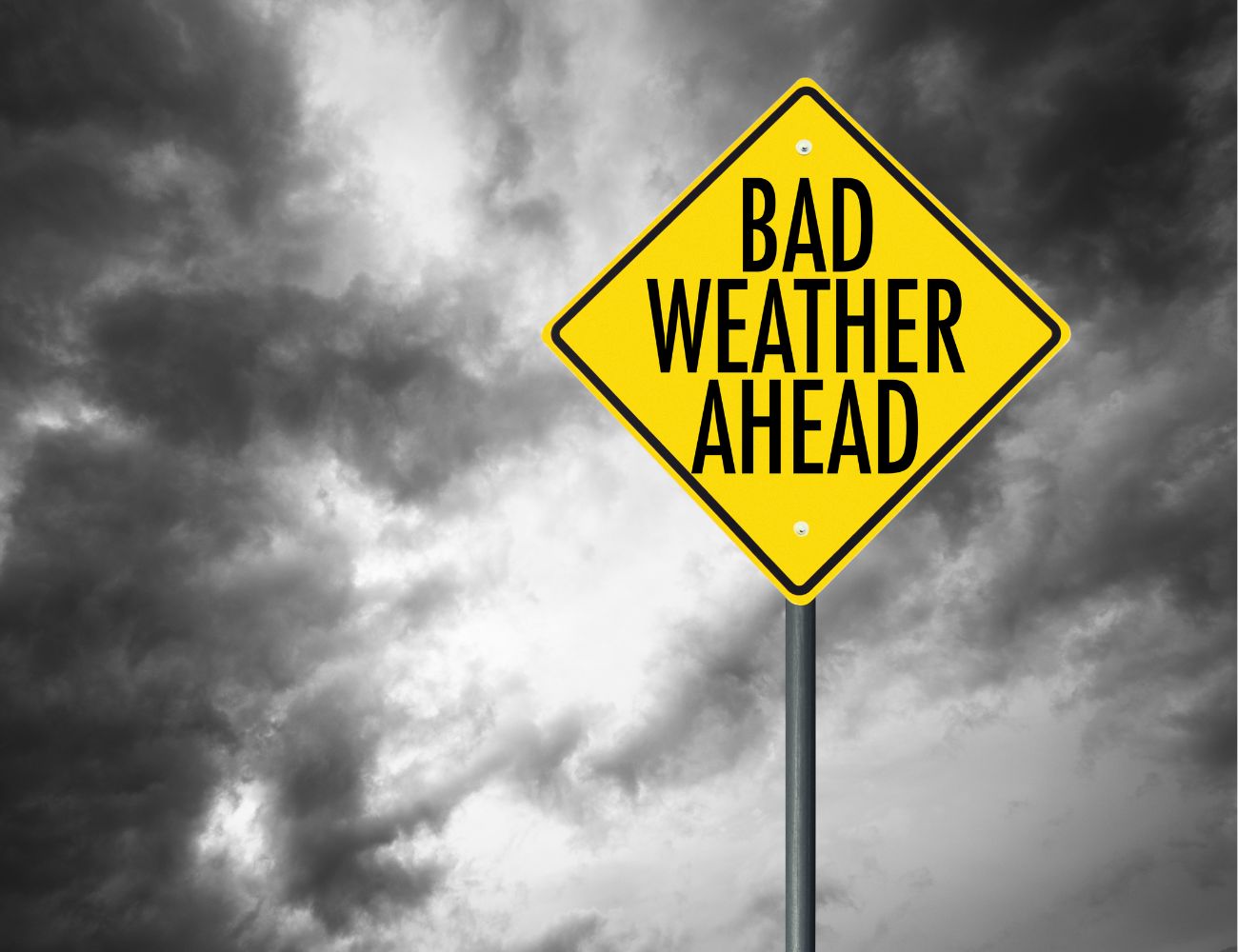
September
General: Marks the end of the “little summer” and the beginning of the peak rainy season.
Caribbean Coast: Heavy rain showers and thunderstorms.
Arenal Volcano Region: frequent rain, active wildlife.
Central Valley: regular rain showers and warm temperatures.
Central and South Pacific: frequent rain showers and thunderstorms.
Northern Pacific: Regular rain showers and thunderstorms.
Monteverde: Peak rainy season, with lush greenery and frequent rains.
October
General: Typical rainy season month, with frequent rain showers and thunderstorms.
Caribbean Coast: continuous rain showers and humid conditions.
Arenal Volcano Region: frequent rain, lush landscapes.
Central Valley: regular rain showers and warm temperatures.
Central and South Pacific: continuous rain showers, active wildlife.
Northern Pacific: Regular rain showers and thunderstorms.
Monteverde: Lush and green, with continuous rain showers.
November
General: End of the rainy season, with decreasing rain showers and thunderstorms.
Caribbean Coast: Gradually decreasing rain showers.
Arenal Volcano Region: Less frequent rain, increasing sunny days.
Central Valley: reducing rain showers, warm temperatures.
Central and South Pacific: decreasing rain, preparing for the dry season.
Northern Pacific: Less frequent rain showers, warming up.
Monteverde: Start of the windy season, with wet breezes and sunny skies.

December
December is a weird month if you are in the higher areas of Costa Rica. On the Pacific Coast there will be an increase in the winds. And it gets quite sunny.
However, for the mountains, and the Central Valley is very windy, there is a permanent drizzle and lots of rainbows. It is the favorite month of the year for many Costa Ricans.
General: Beginning of the dry season, with sunny days and clear skies.
Caribbean Coast: occasional rain, mostly sunny.
Arenal Volcano Region: Mix of sun and occasional rain showers.
Central Valley: sunny, warm days.
Central and South Pacific: sunny and warm, ideal for outdoor activities.
Northern Pacific: sunny and warm, perfect for beachgoers.
Monteverde: Windy season in full swing, with wet breezes and sunny skies, frequent rainbows.
Conclusion
Whether you’re soaking up the sun on the Northern Pacific beaches, exploring the rainforests of the Caribbean Coast, or hiking through the vibrant landscapes of Monteverde, being prepared for the Costa Rican weather will enhance your experience.
Embrace the natural beauty and diverse climate of this stunning country, and make your adventure unforgettable.
By understanding these weather patterns, you can plan your activities and destinations in Costa Rica more effectively. Enjoy your adventure in this diverse and beautiful country!
Copyright laws protect the proprietary content in this article. Reproduction, distribution, or transmission in any form, whether in part or in whole, is strictly prohibited without explicit permission from the author.
If you wish to use, quote, or reference any portion of this article or blog, it is mandatory to provide proper attribution by including a clear reference to the original source at olgasaenz.com. Unauthorized use without appropriate credit is not permitted and may result in legal action.
Costa Rican hotels as some of the best in the World
Three prestigious Costa Rican hotels have been recognized among the top 15 in Central and South America by Condé Nast Traveller’s 2024 Reader’s Choice Awards.

These resorts are the Hotel Boutique Lagarta Lodge in Guanacaste, El Silencio Lodge & Spa in Bajos del Toro, Alajuela, and Tabacón Thermal Resort & Spa in La Fortuna.
Costa Rican hotels scored impressively (All out of a possible 100)
- Hotel Boutique Lagarta Lodge earned 96.61 points
- El Silencio Lodge & Spa 91.89 points
- Tabacón Thermal Resort & Spa 91.76 points
These hotels are located in stunning areas of Costa Rica, each with its own unique charm that delights travelers.
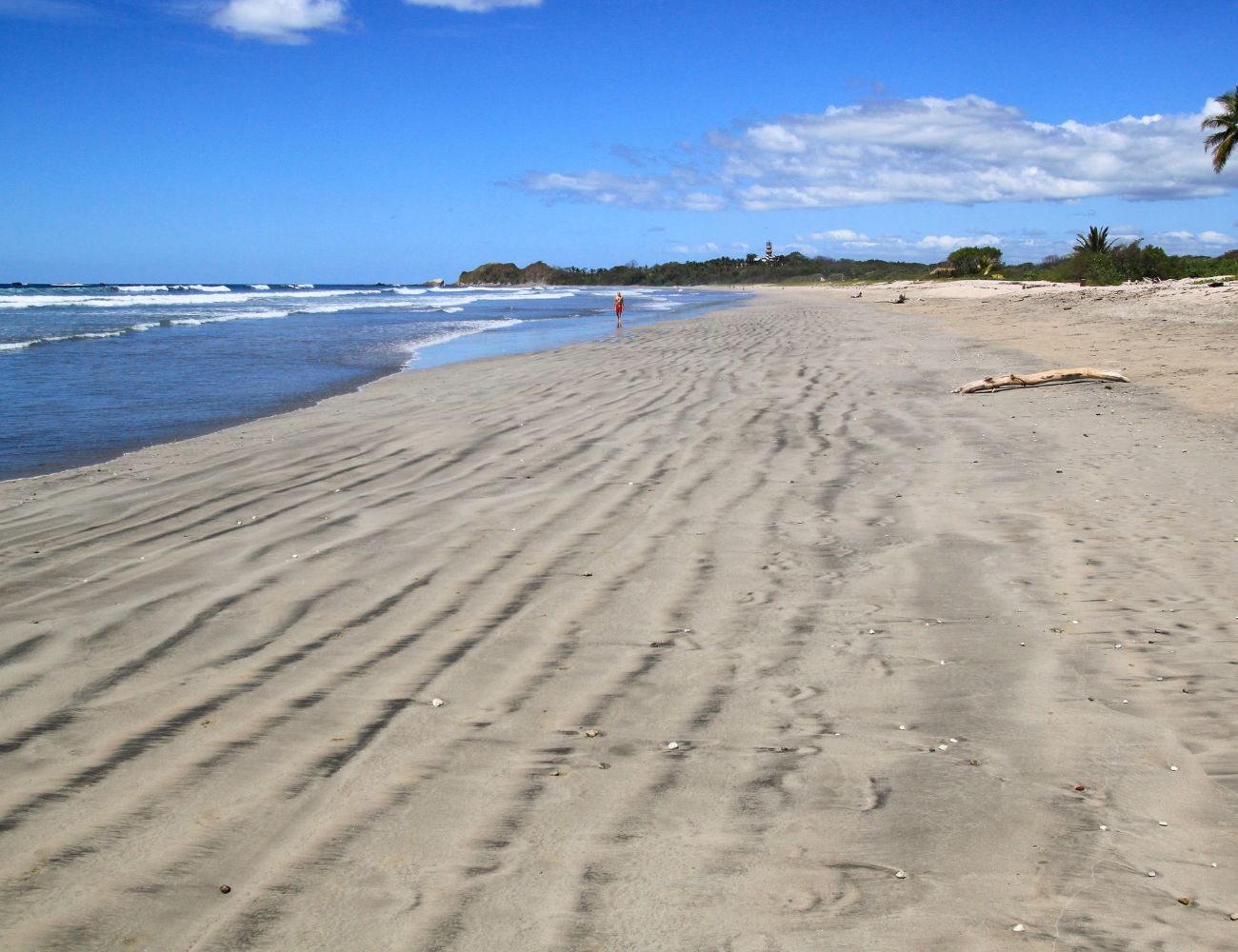
The boutique hotel Lagarta Lodge in Nosara, on the Nicoya Peninsula, is situated next to a nature reserve and offers breathtaking views of the Pacific coast.
Meanwhile, El Silencio Lodge & Spa is nestled near the Poás Volcano, surrounded by mountains and tropical forests.
Tabacón Thermal Resort & Spa is the perfect spot to admire the Arenal Volcano and enjoy the hot springs in La Fortuna.
These hotels offer wellness packages, adventure, and the chance to bask in the peace and tranquility of Costa Rica’s magical nature. “It is very gratifying since this recognition is voted on by travelers from around the world. Knowing that we compete with the most select resorts in the region, known for their high levels of hospitality, shows us that the work we have done as a team has been worth it,” said Alonso Bermúdez, General Manager of Hotel Lagarta Lodge.
This recognition positions Costa Rica as a sought-after destination, enhancing its reputation as a leader in sustainable tourism. The country also reinforces its image not only as a place of breathtaking natural beauty but also as a country that offers world-class hospitality, wellness experiences, and eco-friendly tourism.
February in Costa Rica, one of the best months to come
Costa Rica in February is brilliant! It’s sunny and filled with all the lusciousness of the recent rains, but shining under the pleasant months of the sunny season. It is a period to see animals, to enjoy forest trails, and to relish in adventures. Read on to find more about Costa Rica in February.
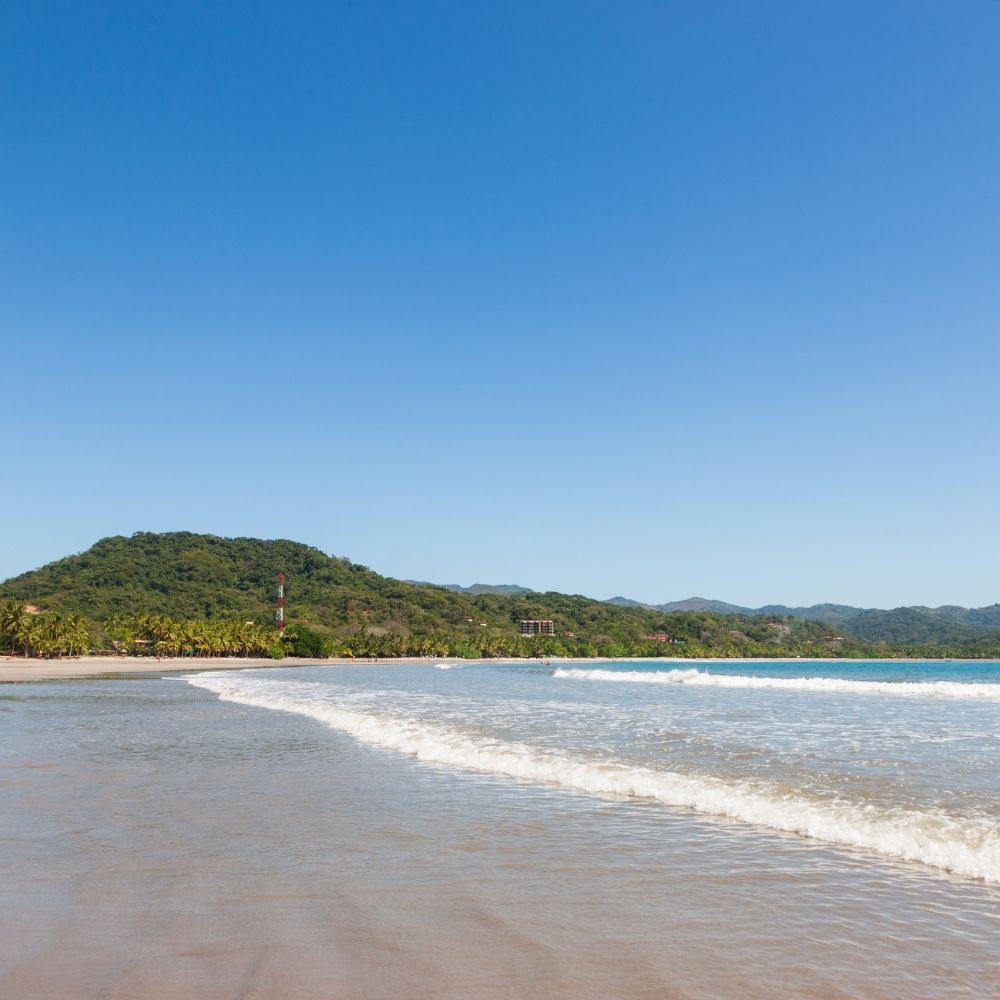
February in Costa Rica is bright, cool, and occasionally wet in certain areas. It is a transitional month, going from cloudy to sunny in the Pacific Ocean-influenced regions and from rainy to sunny in the Caribbean and Northern areas.
In the mountains, it may be chillier than normal. Monteverde, the area of San Ramon, or the zone of Los Santos, will be cooler and sometimes rainy.
It’s also important to realize that the month of February is part of the high season, and rates will be higher than in other periods of the year. As well, there will be larger groups of people in the renown places and longer lines to get into national parks and reserves.
This guide divides the seasons and locations, as well as the highlights of February in Costa Rica; there may have some differences from one place to the next.
Costa Rica, as small as it appears, has a complex calendar that will most likely alter your schedule if you are presently arranging your vacation.
If you’re looking for warm weather and a place with beaches, adventure, and the allure of a tropical getaway, February in Costa Rica has lots of possibilities for you to consider.
Our Weather in Costa Rica in February: Sunny season
Costa Rica has no seasons, the temperature varies little from season to season. (Although most people refer to them as seasons, the correct term is “periods.”) To put it simply, sometimes it rains less, and sometimes it rains a lot. This periodicity varies depending on height above sea level, wind, humidity, and other factors.
The sunny season runs from December to late April and even early May in all the areas influenced by the Pacific Ocean. The rainy season in these regions goes from May to November.
The areas influenced by the Pacific, other than, logically, the coast, are: all mountain ranges on their Western slopes, the Central Valley, and the Nicoya and Osa Peninsulas.
In the Caribbean Coast, Arenal, Sarapiqui, Turrialba, and on the Caribbean slopes of the mountain ranges, the sunny season time changes as it occurs in March and April, as well as September and October. As a result, these locations are most likely experiencing rain throughout the month of February in Costa Rica.
In areas like Monteverde, Rincon de la Vieja, or the Central Volcanic Mountain Range (where you can find the Intercontinental Division), climate may vary in close proximity. So, you may be on a trail and in a very humid environment in the Monteverde Cloud Forest Preserve, while in the close-by town of Santa Elena it is sunny and hot.
In February in Costa Rica there is also the chance of having cold fronts showing up occasionally, lowering temperatures in the mountains and causing continuous rains in the Caribbean lowlands.
Another phenomenon that is quite common in the rainy period is sudden pours. You may have a dramatic storm with curtains of water coming down one minute, and at the next, the sun will come out, and all that remains is the bright reflexion of millions of droplets over nature.
Keep in mind that the weather in the tropics is variable, and all we give here is a general guideline.
Agriculture in February in Costa Rica:
The coffee picking, as well as its complete process, is almost at its end, although if you visit one of the usual coffee tours you can still witness all the coffee process.
It is also sugar cane season. During the sugarcane harvest season, you may observe some considerable loads on huge carts pulled by tractors and on containers on several of the North Pacific’s roadways. If you’re driving, keep an eye out for twisting roads, as they might be heavy and slow.
Regarding fresh fruits, February is a great time in Costa Rica to eat strawberries, guavas, passion fruit, tamarind, watermelons, and cantaloupes.
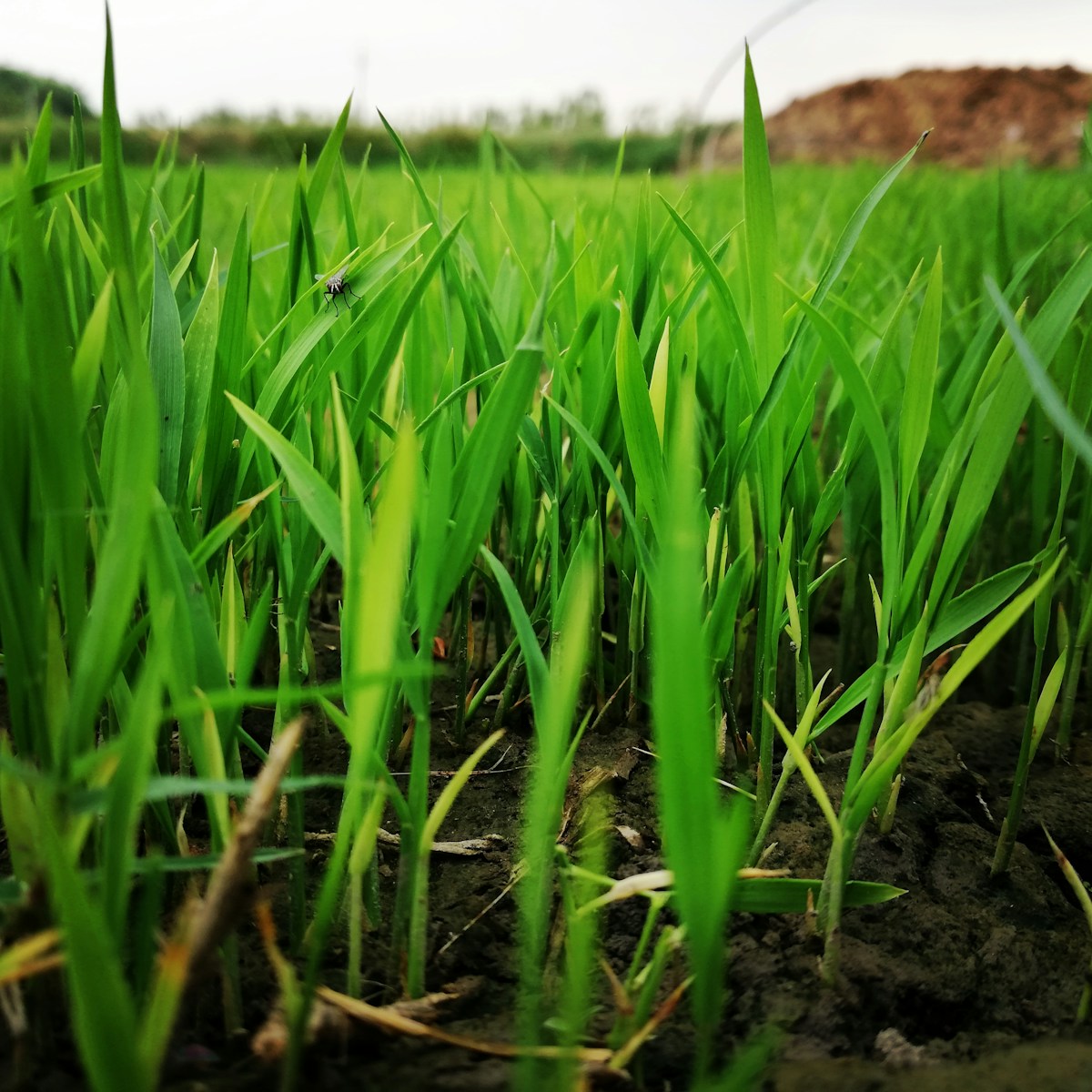
Trees
It is probable that now is an ideal moment for tree enthusiasts because various kinds are in bloom.
The Poro Poro, or Flame of the Forest, is the most appealing during this time of year. These trees were used to shade the coffee and have lost their leaves and blossomed with beautiful orange/red blooms, producing a magnificent green and orange panorama that is difficult to forget.
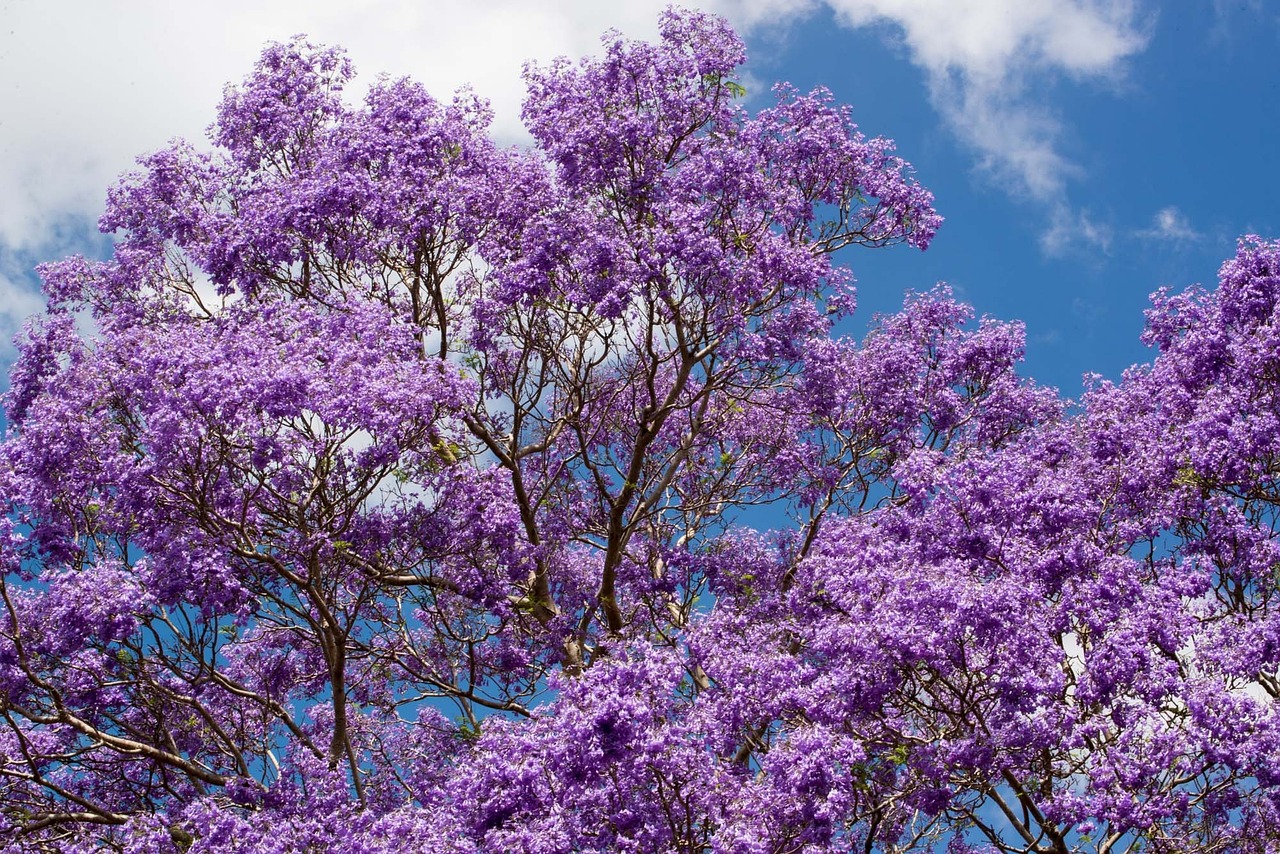
The legendary ironwood is derived from the Yellow Cortez tree, which blooms at this time of year. The tree, as the name suggests, is covered in bright yellow blossoms, which complement the spectacular landscapes of the orange poro poro trees.
February Wildlife Sightings in Costa Rica:
Nature does not function like a zoo; sightings are largely based on chance, although there are many creatures in Costa Rica that you may view all year, including monkeys, coatimundis, sloths, and over 600 species of birds, six kinds of toucans, and over 50 species of hummingbirds.

Birds:
The 252 migratory bird species are enjoying the sunny weather and profusion of food in the forests at this time of year.
It is also the start of the mating season for many species, so behaviors are interesting and, in some cases, even funny.

In February, there are many resident and beautiful migratory species to be observed, some of which are listed below:
The macaws, the scarlet and green macaws are is visible in the lowlands in the Caribbean as much as in the Central Pacific
. Some places where you can see Scarlet Macaws are Jaco, Osa Peninsula, Manuel Antonio, Carara National Park, and Corcovado National Park. To observe the Green Macaws, you will have to go to the Caribbean lowlands or the northern area close to Ciudad Quesada and La Fortuna.
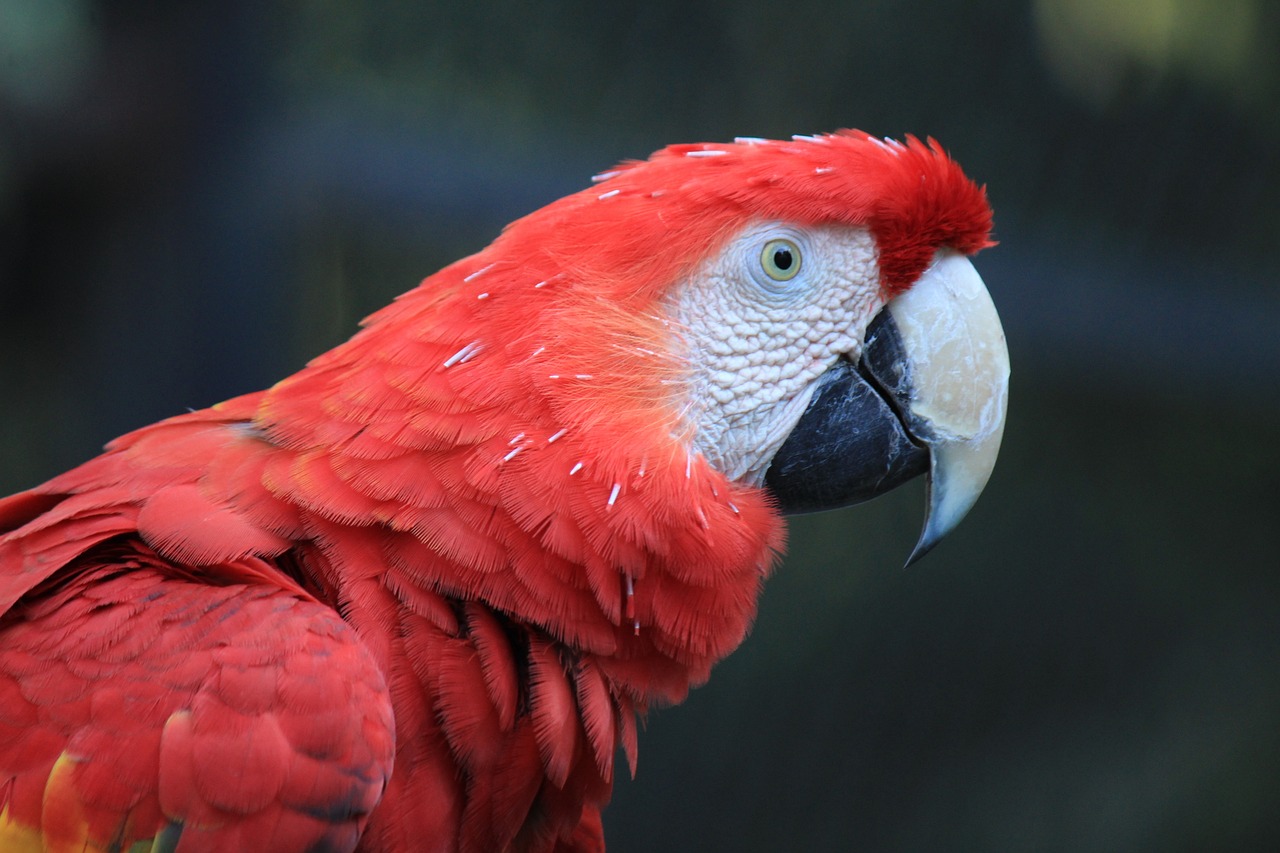
Hummingbirds: Costa Rica is home to over 50 species of hummingbirds, each with its own distinct look and flight pattern. They are visible all year.
In Costa Rica there are six species of toucans, and you can find them in February in Costa Rica throughout the different areas, depending on how hot or chilly it may be: In the cloud forests, you can easily see the Emerald Toucan and the Yellow-eared; the Black Mandible and the Rainbow-billed or keel-billed Toucan can be seen throughout the country, with some exceptions regarding the South Pacific and the South Caribbean.

The Collared Aracari dwells on the Caribbean slope, from southern Mexico to western Ecuador, and has the same range as the Fiery-billed Aracari.
The Collared Aracaris are scarce on the northwest Pacific slope of Costa Rica but becomes more abundant in the western half of Guanacaste and the Nicoya Peninsula.
But they are visible all year round and of course, February is not an exception in Costa Rica.
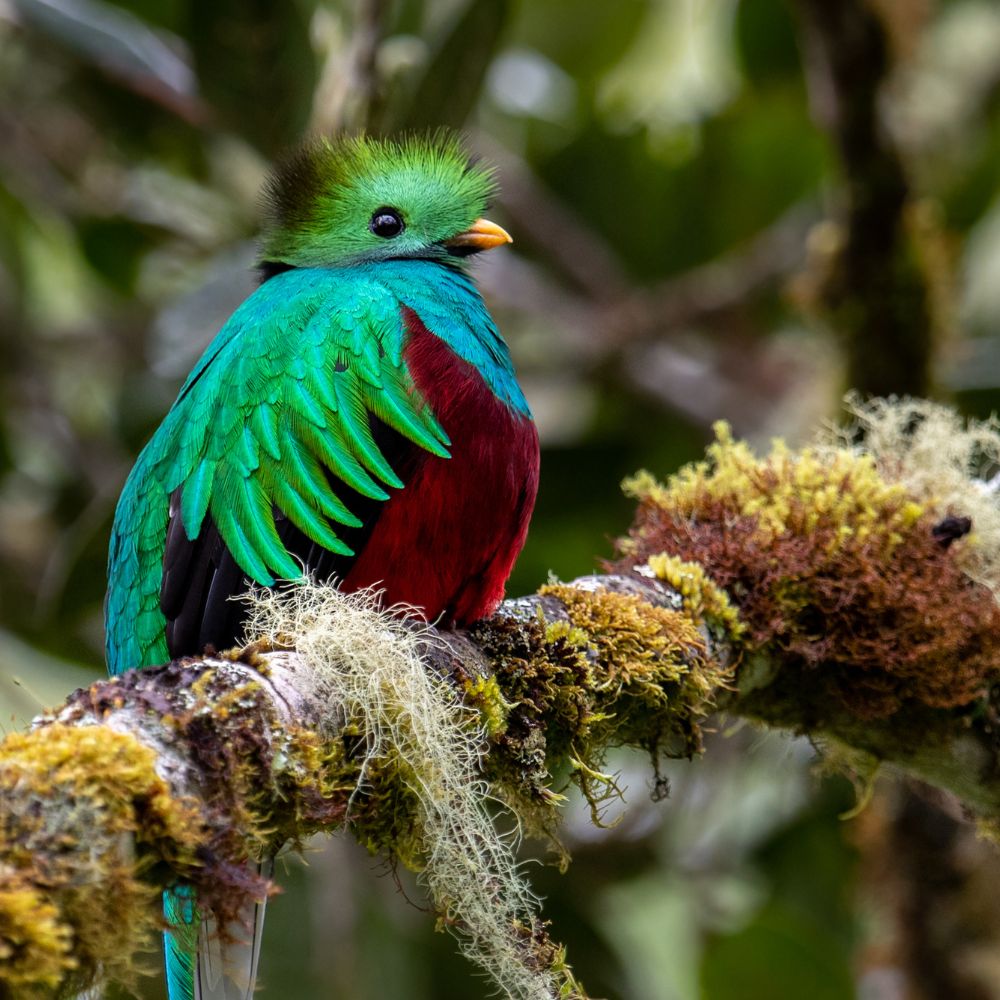
During February in Costa Rica, you may see the Resplendent Quetzal at Monteverde and Savegre, as well as other mountain highlands.
At this time of year, Resplendent Quetzals make their nests, and if you examine one of these nests, they become extremely visible (from a logical distance and with the proper optical gear, this is a fantastic experience!).
If you are willing to see a particular species, please let send me a note, I can get you in contact with the best birdwatching guides in Costa Rica. If you like a bird watching itinerary, they can get you the best!
Whales:
· Humpback whales in the North Atlantic: From December to March
· Humpback Whales in California: From December to April
Whales coming in this time of year are from the Northern Hemisphere, and sometimes you can spot them, and sometimes they go to hawaii and other destinations.
Best time to watch whales in Costa Rica is from August to October, on the Pacific Coast.

Dolphins:
Species such as bottlenose and spotted dolphins can be observed all year.
From December through March, look for the spinner and the common dolphins.
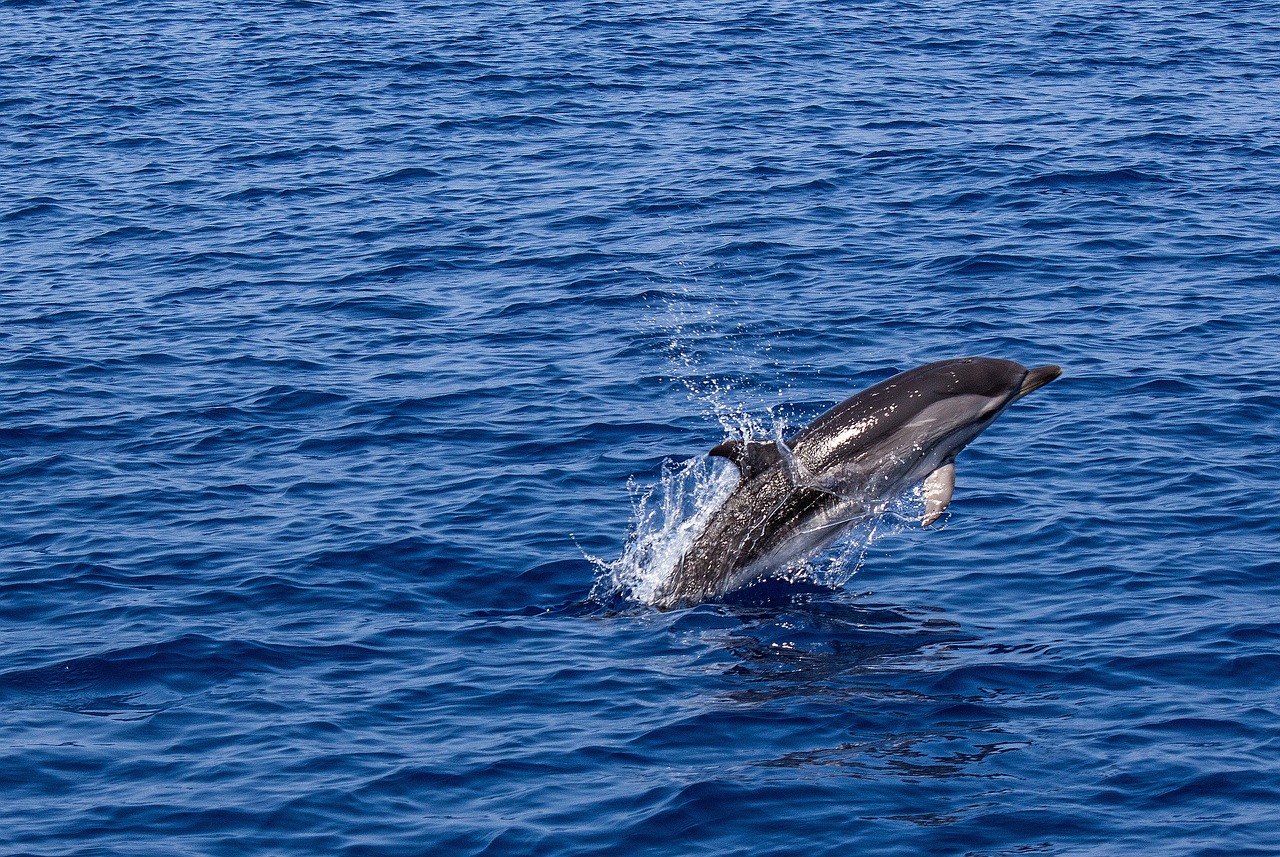
The Best Places to Watch Dolphins:
· Drake Bay
· Golfo Dulce
· Tamarindo Beach
· Dominical-PParque Marino Ballena
· Tambor Beach
· Gulf of Nicoya
Dolphins are occasionally observed in the Tortuguero Canal on the Caribbean side.
Sea Turtles in February in Costa Rica
The following species can be seen all year: Leatherback, Olive Ridley, Hawksbill, and Pacific Green Sea Turtle.
The next are the best spots to observe sea turtles in February:
· Marino Las Baulas National Park, Tamarindo, Playa Grande
· National Park of Santa Rosa
· Wildlife Refuge at Ostional, Arribadas
If you are in the North Pacific region in this time of year be attentive to the impressive arribadas that come to our coasts to lay their eggs. It is an incredible phenomenon to witness.  The Travel Industry in February in Costa Rica
The Travel Industry in February in Costa Rica
February is considered the “high season.” This means that thousands of visitors, mainly coming from the North (United States and Canada), come to Costa Rica, running away from the cold spells of winter.
Places like Tortuguero, Arenal, Monteverde, Manuel Antonio, and Tamarind will be quite full. And there might be lines to get into some places; restaurants may ask for reservations, and tours may be filled to their capacity.
Please keep in mind to keep your mask on at all times and have alcohol in gel at reach to put on your hands often. Use the lavatories every time you go into a place and keep social distance.
Surfing:
From December to late February, the cold fronts produced in the North create amazing swells on the Caribbean coast of Costa Rica.
Salsa Brava is at its peak; however, the whole South Caribbean area will be in its best time for skilled surfers.
This wave, which many experts say is a classical Hawaiian wave, originates in deep waters and breaks on the reef barrier.
This causes a large wave to form, carrying a significant volume of water, with a tube on the right edge and a field to surf on the left—a perfect experience of warm water.
Salsa Brava is a dangerous wave, not recommended if you are a beginner in the world of surfing. It can be challenging even for the most experienced surfers, so it is advisable to enter it if you have experience and always have a spare surfboard.
The best time to surf this wave is December and January, when it reaches up to 8 meters in height, although the wave’s energy is also great throughout the rest of the year. Sometimes in February in Costa Rica there are still some good waves.
To wrap it up
Remember that February is a beautiful, bright month! A great time to come to Costa Rica if you’d like to get some more information or ask any questions regarding Costa Rica. send me a note to writer@olgasaenz.com
January in Costa Rica
January in Costa Rica is among the best months for any traveler. It has clear skies, warm days, and strong winds. It changes from one region to the next, of course, but in general, it is sunny, although fresh, as trade winds cross over Costa Rica, creating currents that cool off even the hottest areas.

Spending the Winter in Costa Rica?
Costa Rica in January can be different from one region to the next, and this is just a guideline. Microclimates can be unpredictable at times.
Caribbean Coast of Costa Rica in January can be rainy
Tortuguero, Limon Port, Cahuita, Cocles, and Puerto Viejo are in the rainy season, with 17 rainy days and 12.6 in . (320 mm) .
Temperatures go from 21.1 °C | 70°F to 28.8 °C | 84 °F.
Northern Region of Costa Rica in January may also be rainy
La Fortuna, Sarapiqui, Rio Celeste, and Boca Tapada are in the rainy season, with 12 rainy days and 6.8 in (112 mm). 9
Temperatures go from 21°C (69.8°F) to 29°C (84.2°F).
Central Valley of Costa Rica in January
San Jose, Alajuela, Heredia, Cartago, and San Ramon are in the sunny season, with 6 rainy days and 2.19 in (36 mm).
Temperatures go from 18.9°C (66°F.) to 23.2°C (73.8°F).
Pacific Coast of Costa Rica in January
Guanacaste, Herradura, Manuel Antonio, Uvita, and Osa are in the sunny season, with 6 rainy days and 2.19 in (36 mm).
In Monteverde, in January is the windy season, and wind can become an issue to do some activities like ziplining, and even hiking. Although, the forest is absolutely breathtaking in this time of year, and the sunsets from Monteverde are the best.
Temperatures go from 22.9°C (73.2°F) to 30.3°C (86.5°F).
WILDLIFE IN JANUARY IN COSTA RICA
Birdwatching in Costa Rica in January
At this period of year, the 252 seasonal bird species in Costa Rica are enjoying the warm weather and abundance of food.
At this time of year, many resident and attractive migratory species can be seen. However, January on the Caribbean of Costa Rica is rainy season, and on the Pacific side it is very windy, which makes birding harder. You can also find below some of the usual wildlife you may see in Costa Rica in January.
TURTLES
Olive Ridley, Leatherback, and Green Sea Turtles are on the Pacific Coast.
No turtle nesting on the Caribbean side of Costa Rica at the beginning of the year. The forest looks amazing though!

WHALES
Northern Hemisphere whales are in the area in this time of year. Although, it’s easier to see them in the Northen Pacific than in the South Pacific area of Costa Rica. (The whale season for the South Pacific is from August to October, when the Southern whales come here for their winter.)
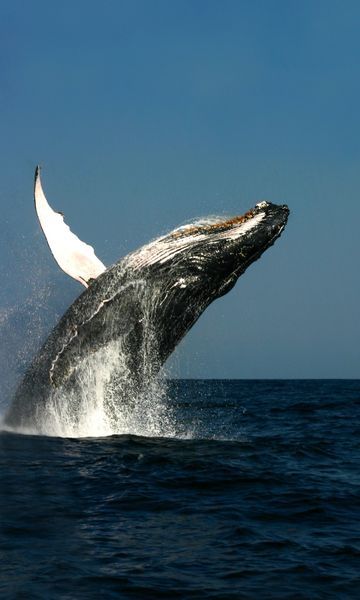
FROGS
Visible all year round, throughout the whole country. In january though, if you are in the Northen Pacific region and on the beach, it’ll be harder to spot them as it is very hot and dry for frogs in January.

MONKEYS
Visible all year round, depending on where you are you will see one or another species. In some even all of them.
DOLPHINS
Visible all year round.
MIGRATORY BIRDS
Migratory birds are in Costa Rica in January.
RESPLENDENT QUETZAL
Hard to spot the quetzal in January, as they migrate to lower areas and are not nesting.
SCARLET MACAWS
Visible all year round
TOUCANS
All species are visible all year round.
HUMMINGBIRDS
Visible all year round.
SLOTHS
Visible all year round. Although in January in Costa Rica it may be easier in some areas as when it is warm they move much more. Sometimes when it’s raining they just look like a ball of fur up there.
CROCODILES
Visible all year round
THE TRAVEL INDUSTRY
COSTA RICAN PEOPLE
In January, it is the summer for Costa Rica. Public schools are out, and families use this time to go out to the beach and the most popular places.
Especially on the weekends, the last week of December, and the first week of January, you will see all sizes of families around the beaches and forests all throughout Costa Rica, the closer to the Central Valley, the crowder.
You will find families and groups of friends on the beach and in national parks and preserves.
HIGH SEASON
January in Costa Rica is very busy.
A lot of people come for vacation, but also, many visitors stay for longer periods, running away from the cold.
If your holidays are in January, we recommend you to reserve as soon as possible and way in advance. It is hard to find accommodations sometimes!
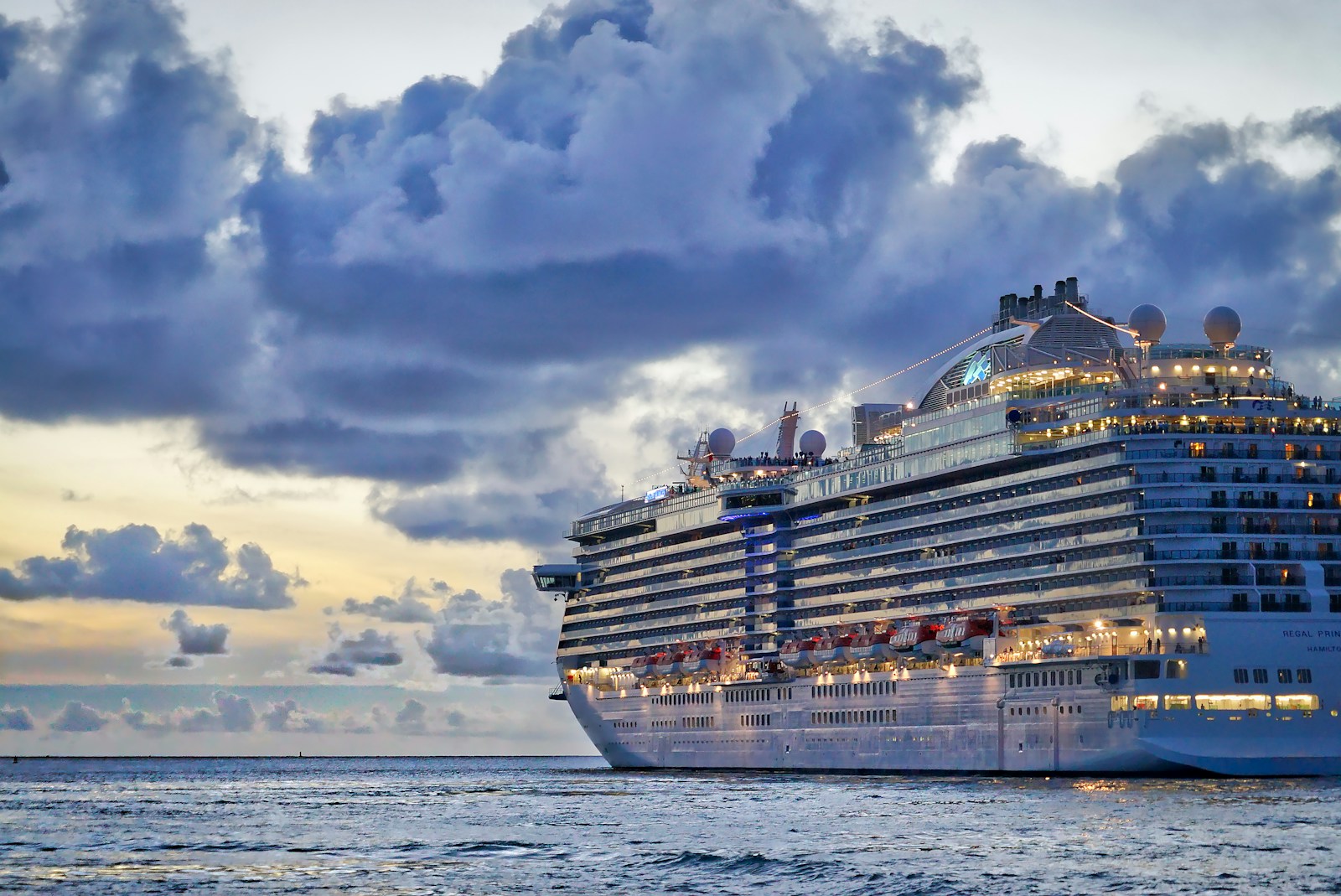
January is the sunny season and peak season, with cruise ships visiting all of the country’s major ports and bringing crowds to both coasts on occasion.
There may be some waiting time on the boat in Tortuguero for the National Park Canals tours.
There may be long lines at the National Park entrances to Manuel Antonio and the Monteverde Reserves.
If you are more comfortable away from crowds, my recco is to go for areas off the beaten track, like the area of Los Santos, Arenal Lake, Perez Zeledon, and many others that I will talk about in future podcasts and articles.
BLOOMING TREES
January in Costa Rica is magnificent due to the many blooming trees everywhere!
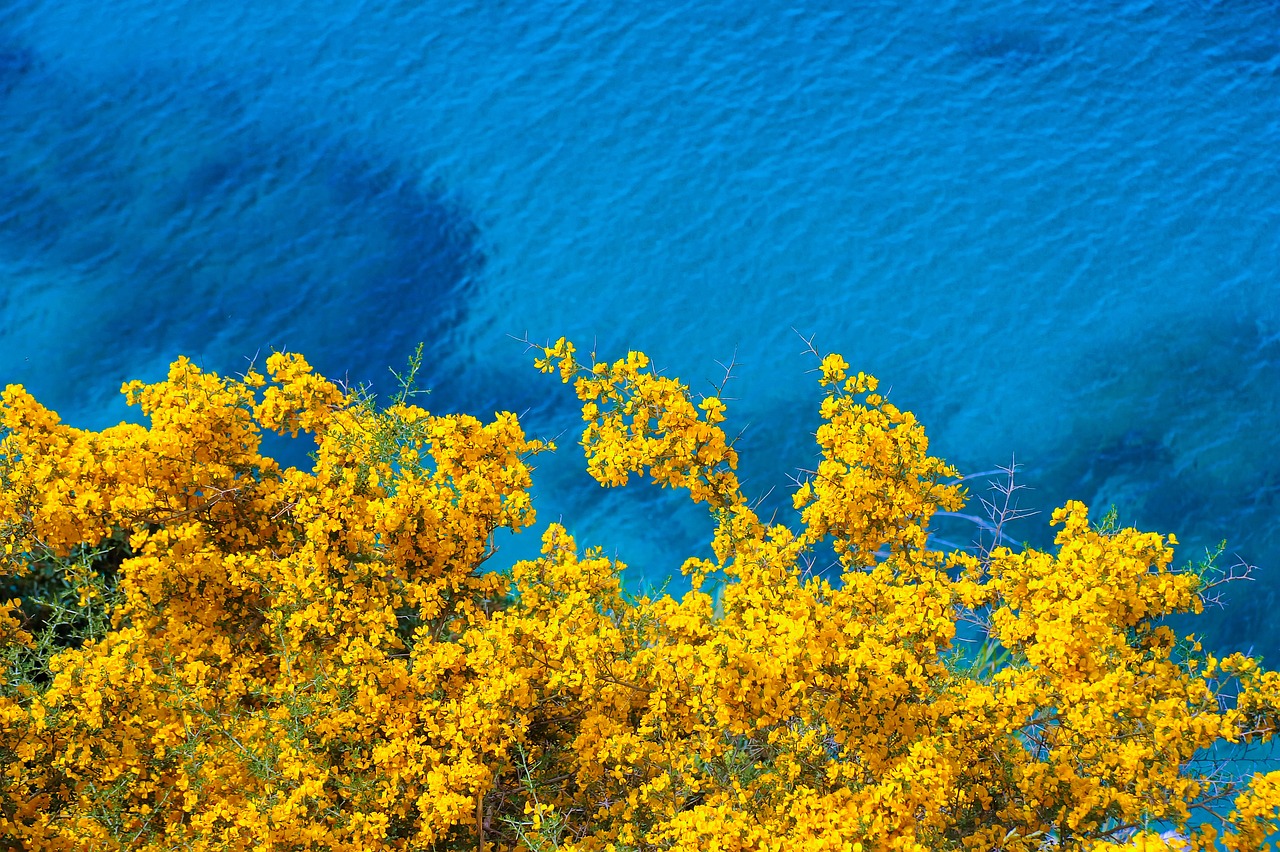
The Sabana Oak, also known as the Pink Pui, is blooming, and if you happen to drive by San Jose, we fully recommend taking Rohrmoser Boulevard to see a breathtaking pink landscape along the main avenue.
The Poro Poro, or Flame of the Forest, is the most appealing at this time of year. These trees were used to shade the coffee and have lost their leaves and blossomed with bright orange/red flowers, creating a fantastic green and orange landscape that is difficult to forget.
Another tree that begins to bloom at this time of year is the Yellow Cortez, which is the source of the famous ironwood. As the name implies, the tree blooms with bright yellow flowers that complement the fantastic landscapes of the orange poro poro trees.
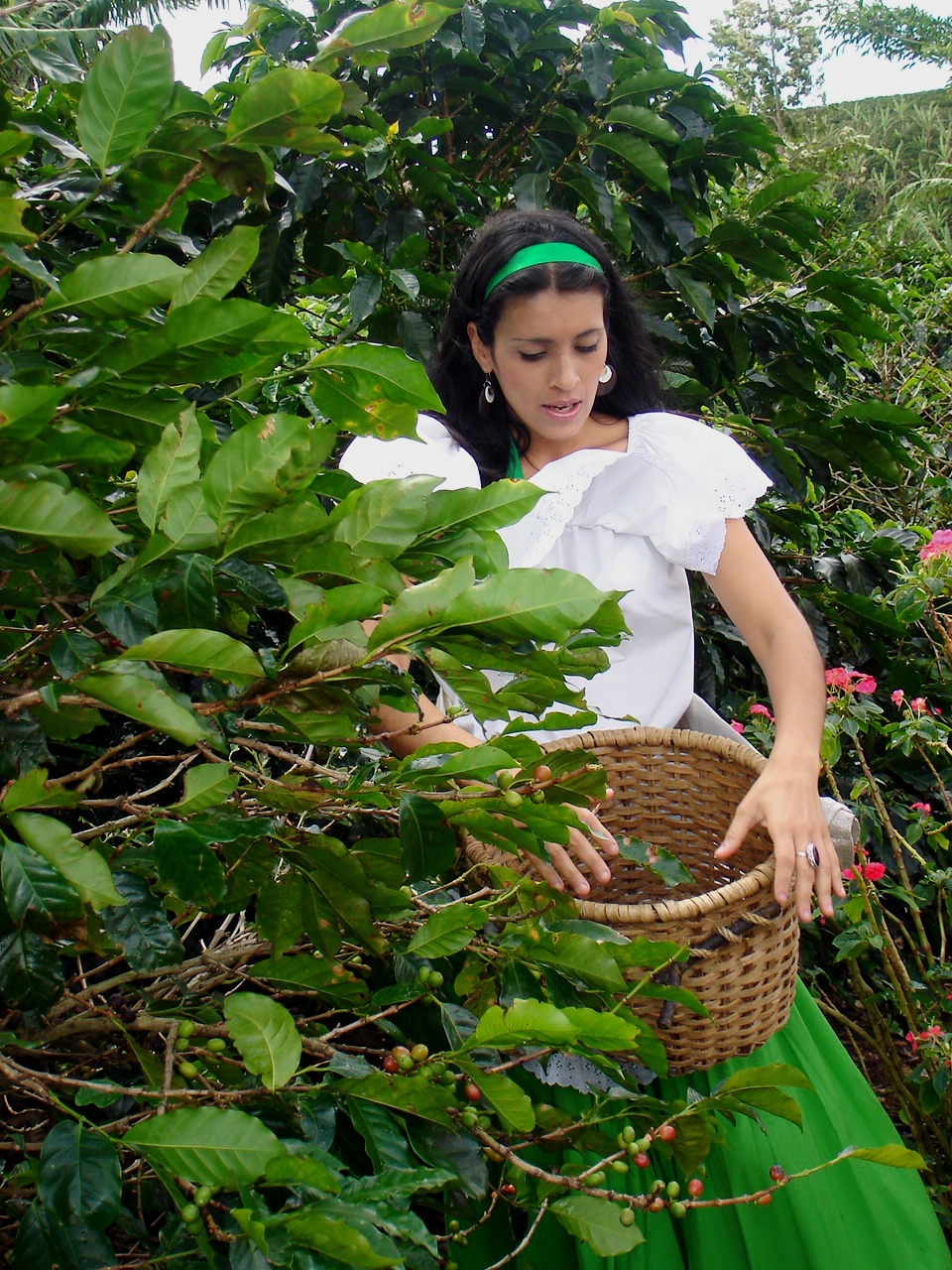
Agriculture: Coffee picking and processing are still ongoing. It’s an excellent time for coffee tours as you may get to see the whole process, from the second or third round of picking to the complete process of fermentation, choosing, and drying.
The usual tropical fruits are available all year: banana, pineapple, and papaya. Mangoes are off season, unfortunately. You can still get them, but they will be more expensive.
Oranges might not be as sweet as tangerines.
Soursop, avocados, plantains, watermelons, and kiwis are also available.
To Wrap It Up:
Costa Rica in January is absolutely fantastic! BUT SO IS THE REST OF THE YEAR! We will be talking about Costa Rica month to month in future posts.
Costa Rica Travel Safety Regarding Crime… and Crocodiles
Costa Rica is a popular destination for tourists due to its natural beauty, adventure, beautiful beaches, rainforests, and friendly locals. However, it’s important to use common sense and be mindful about some things. Here I am sharing several Costa Rica travel safety ideas that can help you enjoy our country in a great, safe way.
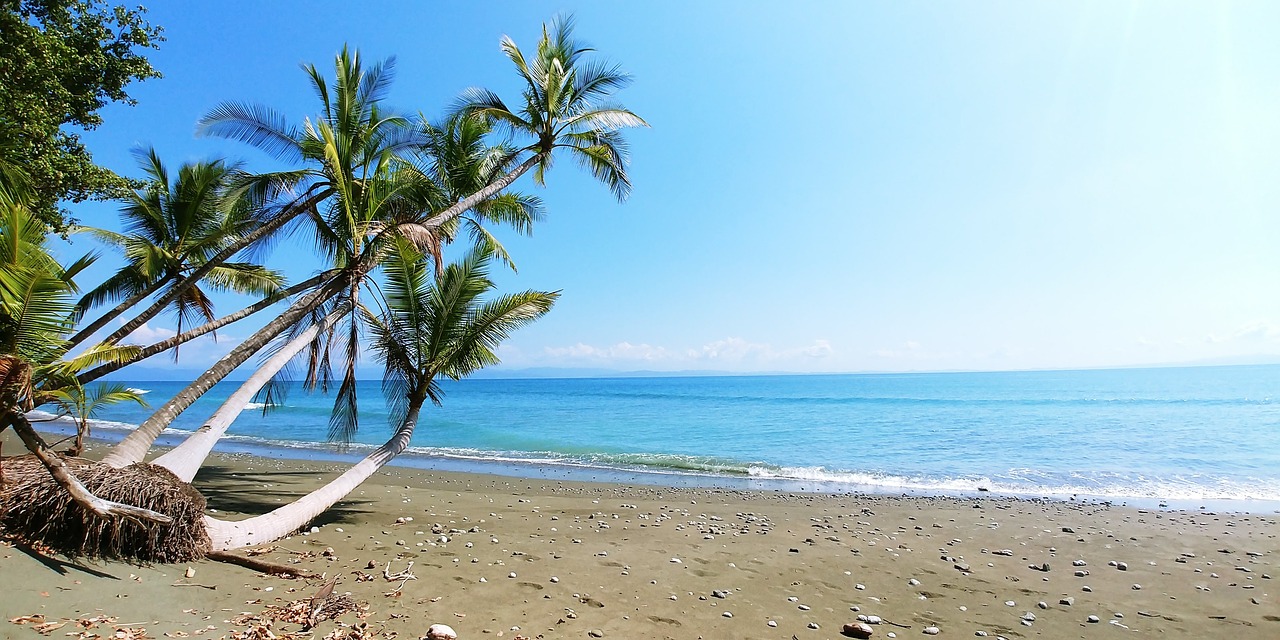
So yeah, let’s say you have already purchased your flight ticket to your dream destination and for your dream vacation. Coming to Costa Rica, aren’t you?
Well, what’s next? You may tell me that. Pack your bags; get ready to come.
But no, you have to do your homework, and you’re doing it right now. By hearing this podcast, I guess you are getting informed. That’s the most important thing to do when we travel.
Get informed
Getting informed about the destination when we’re going helps us to prevent a lot of disasters, but it also allows us to put our priorities first and it also allows us to plan ahead in terms of safety.
When we talk about Costa Rica, we talk about nature, we talk about adventure, we talk about beautiful beaches, amazing rainforests, and super friendly locals. And this makes it a very popular destination for all sorts of tourists, including celebrities. While Costa Rica is generally safe, some visitors may feel uneasy due to the reports of violence in the recent weeks.
These acts of violence are happening in very specific areas, mostly isolated from the touristic destinations. On the other hand, most crimes against tourists are mainly due to chance and involve petty theft rather than violence. Serious crimes such as armed robberies, assault, or similar are less common but can occur. It’s important to remain vigilant and to take precautions to minimize the risks.
When we talk about Costa Rican travel safety, we must go beyond illnesses, diseases, and insurance possibilities. We covered all that in another post called Costa Rica travel safety tips.
Here we will talk a bit about other risks and all that you need to know to cope with them.
As a Costa Rican, I want you to feel at home, be safe, and leave with a smile. We always strive for visitors to have the safest and most delightful vacation. And even if you’re not traveling with a travel agent or a tour guide, for me, it’s really important for visitors to leave Costa Rica with a smile. Talk about it with love and cherish your time in Costa Rica.
So please keep on reading these Costa Rica travel safety recommendations and find some of the most important travel safety tips regarding crime.
Travel with the certified suppliers
When talking about a Costa Rica vacation, the first and most important tip that I have to recommend always, whatever you’re doing or for whatever you’re coming, is to use your common sense and ask questions to the right people. That’s probably the most important advice that anyone can give you.
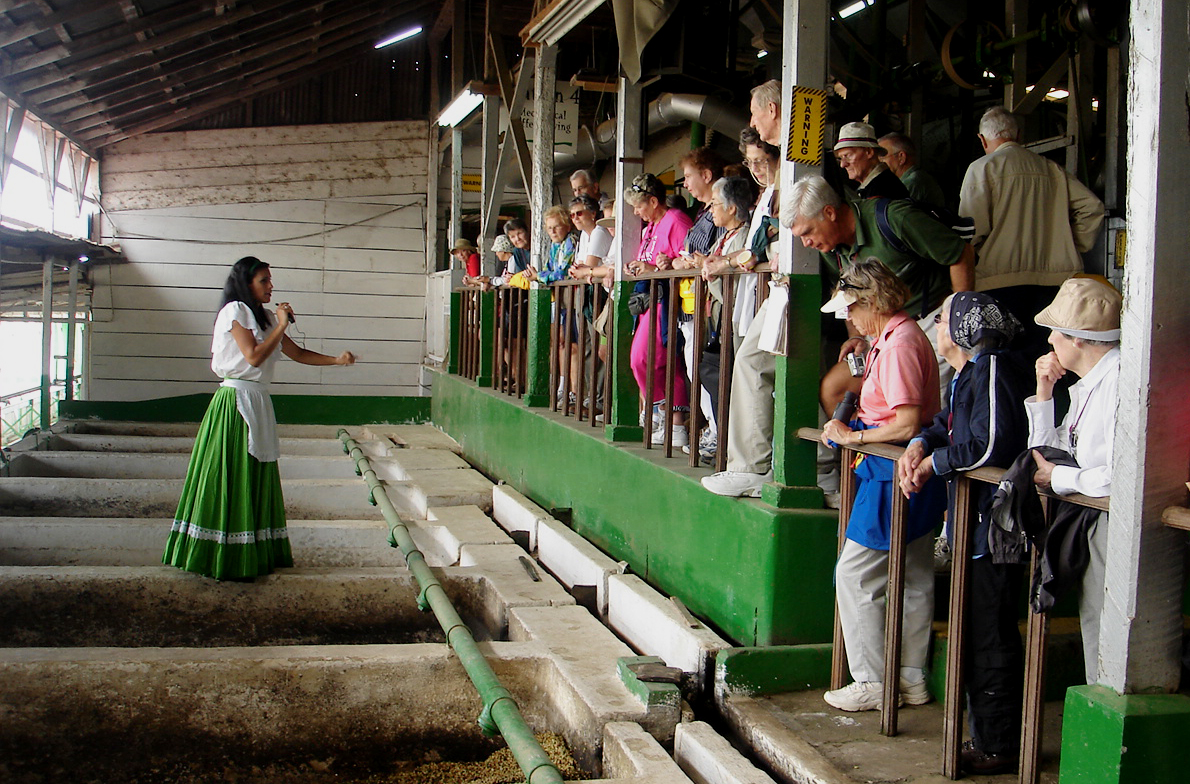
What do I mean by the right people? Okay, whenever you are hiring a travel agent or a tour operator, even a hotel, make sure they exist. Make sure that they are authorized. Make sure that they are listed on the Costa Rican travel board.
Here is the link so that you can check travel agencies, hotels, you know, people in general, even tour guides. You can find the list of the authorized tour guides on the Costa Rican travel board website. Costa Rican Tourism Board
So using authorized services is a very important thing. It’s very easy to be gullible when Costa Ricans are so nice. But please make sure that you’re traveling with someone who knows what they’re doing and is recommended and reviewed.
Weather Awareness
Please remember we are in the tropics. The tropics are unpredictable. I mean, we have the sunny season and we have the rainy season, and you’ve seen, I even have a podcast about the weather in the Caribbean.
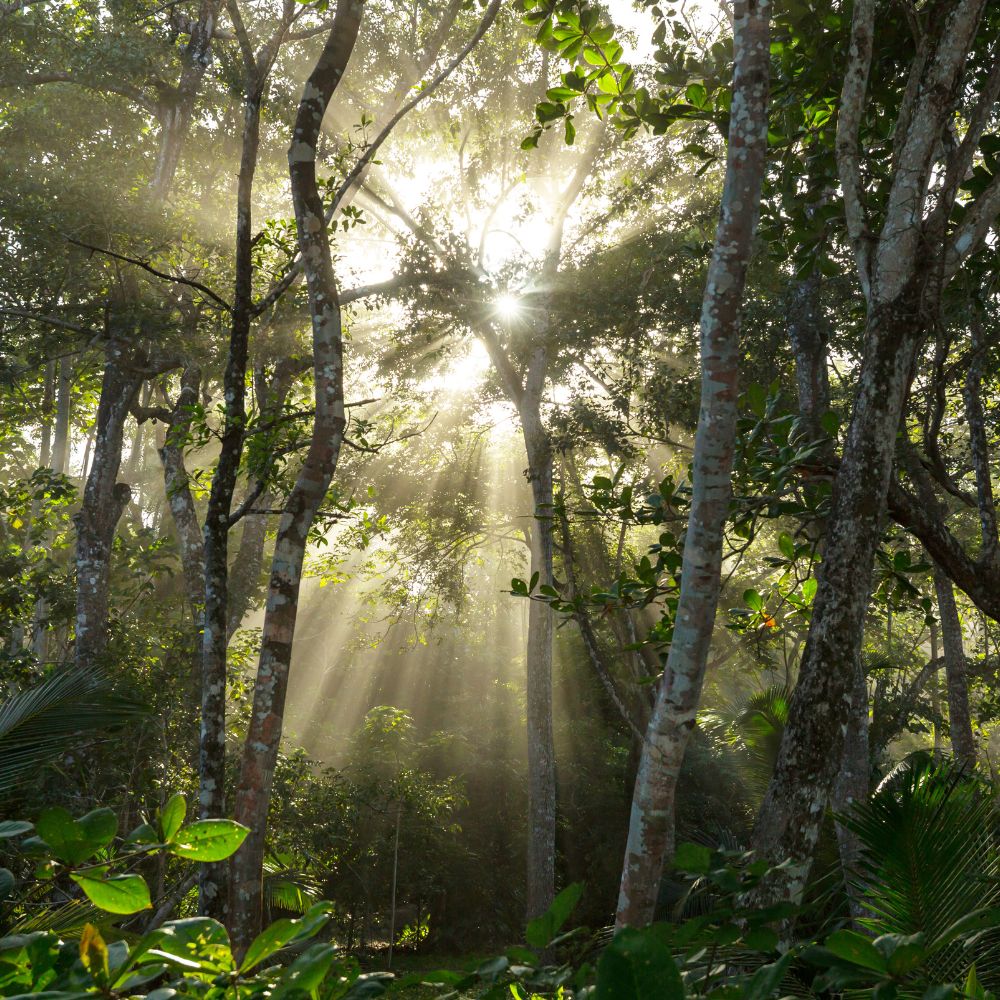
And the one thing that I tell you about, especially the Caribbean, is that it’s unpredictable. Sometimes it rains during the sunny season. Sometimes there is a drought during the rainy season. So find out what the weather’s going to be like and prepare yourself for this.
Verify the insurance.
First of all, your travel insurance—what does it cover?
Make sure that it covers everything that you need. But also find out about what the insurance of the hotel, of the travel agency, or of the tour operator covers, because you don’t want to know about it after the accident happened. If something happens—hopefully nothing will happen—but you don’t want to find out it doesn’t cover whatever this or that, or that it covers it but you have to pay extra.
It’s important to be informed about what the policies are, the cancellation policies, and the insurance policies of all the people involved with your trip—travel agents, tour operators, hotels, and homestays.
Avoid secluded areas.
What are secluded areas in Costa Rica? If you have come to Costa Rica or you’ve seen videos about Costa Rican roads, you will see that there is nature everywhere. It’s like you cannot avoid it. Wherever you go in this country, except maybe for the downtown areas in the cities, you will find very strong, luscious nature.
And it’s very tempting to stop in the middle of the road, especially if you’re driving, of course, and just get off the car and look at this amazing waterfall, landscape, or rainforest. But if it’s totally alone, avoid it because you just don’t know where you are, and it’s as easy as that.
From all the Costa Rica travel safety recommendations I want to highlight this one. Some amazing spots in our roads, have unfortunately become traps.

You know, in Costa Rica, there are trails in places that are free. There are some areas where you can find places that only the locals go to—trails, for instance, or outlooks where you can see amazing landscapes, but when you get there, they’re empty. Avoid them.
It may be a trap, and you don’t want to have a problem in Costa Rica. So what I would recommend is don’t go jogging at sunrise, don’t go hiking by yourself without telling anyone where you’re going, and don’t go hiking by yourself into an open trail that is free.
It happens; there are those, but it’s best if you have a guard and a door, if you have to pay for it, and if it has marked trails. That will be so much safer. Not only for your health, of course, but especially in regard to crime. It’s much safer to stay in known places with people around.
Next, trust the police. In Costa Rica, there is a type of police that we call Policia turística—touristic police. The touristic police are people that are required to be bilingual, at least not fully bilingual, but they will listen, they will understand a lot, and they will speak some. They’re there for you. Trust them. One of the beautiful things about this country is that you can actually trust the police. Remember, we don’t have an army, so this is the group we trust most in regards to our safety.
Get a local SIM card
That’s a very good idea, and if you can get two, even better. The reason—and you can get them at the airport; you can also get them in some of the main supermarkets, malls, and so on—is that it’s really important for you to be able to communicate at all times.
Even though in some areas you won’t find a signal, in Costa Rica in general, there is very good Internet; there is good signal mostly everywhere. You always want to know where you are and be close to a place where you can reach the police or an ambulance if needed. So, the SIM card is important.
Using local currency.
Costa Rican currency is colones, and we receive dollars everywhere. You don’t have to change everything. It’s important to bring—hold on, let me rephrase this.
Okay, next is to talk about currency in general terms. You don’t need to change everything to colonies. Change $20 at the airport, and that’ll be good enough. In general, where you’re going, they will take dollars in the touristic destinations. They will take dollars—no euros, no pounds, no other currency than colones or dollars or credit cards, of course. I would think twice with American Express because there are places where they don’t take it.
When talking about bringing cash, bring small bills—twenties, tens, fives, and ones. $50 and $100 bills are usually rejected in stores and restaurants. On the other side, avoid using damaged bills because they will just give them back to you. Even a small tear or anything that looks too old will be rejected.

My recommendation is to put your money and your credit or debit card together.
Have two or three credit cards with you, let your banks know that you’re going to use them outside of wherever you are, and just change very little money to colones. They will give you change in colones anyway. So you will end up having the beautiful colones bills, which are really beautiful. You should check them out—they’re beautiful.
ATM safety
Be aware of your surroundings when using an ATM, especially at night. ATMs in Costa Rica—many of them are closed from 10:00 PM to 5:00 or 6:00 AM. That’s important information to note. But be careful where you use them, and be mindful of your surroundings whenever you find that the ATM is in an isolated or secluded place.

Remember what I just told you about secluded areas, okay?
Travel light.
Especially if you are either renting, not renting a car, but going by box, private transfers, or even on a tour, traveling light is very comfortable.
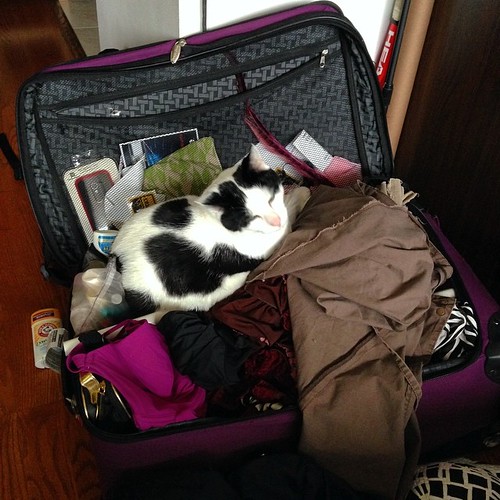
You will find laundry services everywhere you go. There are laundry options in all the main touristic spots of Costa Rica and in most start-up hotels. So be mindful of the luggage weight. There might be trouble boarding it into planes, especially local planes. You may also have trouble boarding your luggage or heavy luggage into boats. So it’s easier, faster, and safer to travel light.
Guard your belongings
Whether you’re renting a car, traveling by yourself, with a group, driving, or traveling by public services or buses, guard your belongings. Let me give you a couple of examples for different ways of traveling.

If you’re traveling with a group, keep in mind that the bellboys, tour guides, or travel agency are not responsible for your belongings. When they tell you to put your luggage outside your door because they’re going to pick it up, make sure they pick it up and that it gets put on the bus or boat. Check that your luggage is being boarded, because it happens sometimes—I’ve been a tour guide and seen situations where someone’s luggage didn’t get loaded, and we had to retrieve it from a different bus later. It’s complicated, so avoid that.
If you’re traveling with private transfers from one place to another, the same thing applies. Make sure they board your luggage. When other passengers get off, ensure your luggage stays on the vehicle. If they remove it temporarily, make sure they put it back. Be vigilant with your belongings, whether you’re on private transfers or traveling in a group.
If you’re driving, lock your car doors and park in private parking lots. If you’re stopping at places like the Tárcoles River bridge or at an outlook, even if you think it’s just for a minute, lock the car and keep an eye on it. Sometimes police will be nearby—park close to them. In most of these places, you’ll find restaurants or stores where you can park and have someone keep an eye on your car.
You’ll also find something in Costa Rica called “guachis,” and I’ll explain them in a bit, but be mindful of these people watching your car.
Be discreet with your phone.
Phones are expensive—unless you have a really cheap one like mine—but big iPhones and Samsungs can be sold for good money. Be discreet with them. Keep them in your bag, purse, or pocket, and take them out only in restaurants or hotels.

Don’t take them out on the street unless necessary. If you’re lost and need to check a map, go into a store or restaurant to check it there; maybe even use their Wi-Fi. It’s safer than pulling out your phone in the street, especially in towns or cities.
Emergency Contacts List
Now, let’s talk about emergency contacts. Keep important numbers with you. If you’re traveling solo, make sure people at home know where you are and what you’re doing. If you’re taking an Uber, take a picture of the license plate and send it to a friend or relative. Have emergency contact numbers not just in your phone but written on paper, and if possible, plastify it.

Keep these numbers—your travel agency’s contact, emergency numbers for Costa Rica, and other important ones—in multiple places, not just your wallet. If your wallet is stolen, you don’t want to lose those contacts.
Car Safety
Let’s talk about car safety. If you’re driving, never leave valuables in your car. Don’t leave anything visible from the outside, like phones or laptops. Hide them in your luggage or lock them up. When parking, choose monitored lots—they’re the safest.

You’ll also encounter “guachis,” which comes from “guachimán,” meaning “watchman.” They might be men, women, or teenagers dedicated to watching cars. They usually charge 500 to 1,000 colones. Sometimes they use tickets, and sometimes they place something on your windshield.
They wear fluorescent vests and help you park, and they expect a tip when you leave. The usual tip is $1-2, depending on how long you stayed.
But don’t get into discussions with them—just tip and leave, especially in areas like Manuel Antonio or Tamarindo, where you might encounter more issues. I highly recommend using parking lots in these areas.
Navigation Apps
Download navigation apps like Waze and Google Maps. Waze is particularly popular in Costa Rica—it’s very useful for knowing about traffic jams, crashes, or road closures due to landslides or repairs. I highly recommend Waze over Google Maps.

Choose secure accommodations. Make sure the place you’re staying has proper locks and is certified. Check reviews, especially if you’re using Airbnb. If you’re a woman, I suggest booking rentals from female hosts. While I’m not saying all male hosts are unsafe, it can be more comfortable to rent from a woman.
Electricity
Be mindful of electrical outlets. Costa Rica uses standard US two-prong plugs and 110-volt outlets. Make sure you’re using the correct outlets or bring a converter if necessary.
Use the Hotel Safe
Store your valuables safely. Use the hotel safe for passports, extra cards, and cash. If there’s no room safe, most hotels have safes at reception where your items are placed in a sealed envelope with your signature. I highly recommend using this option if there’s no room safe.

Carry copies of your passport
Carry copies of your passport. Make multiple copies and put them in different places—your luggage, purse, or other belongings. A US, Canadian, or European passport is valuable on the black market, and you don’t want it stolen. Only carry the original when absolutely necessary, such as crossing into Nicaragua on specific tours. It’s better to carry a copy unless specifically required.
Ask locals for directions
Ask for directions, even if you’re using Waze or Google Maps. While these apps are super useful, sometimes they can take you through rough routes or even dead ends. We’ve all been there, where you end up lost because the app said to go right when everyone else told you to go left. So, always ask for directions.
Ask locals about the landmarks you’ll see on the way—like big trees, supermarkets, or hardware stores that can guide you. Costa Ricans know these parameters very well, so don’t hesitate to ask. If you’re not sure how to ask in Spanish, stop at a hotel or restaurant where bilingual staff can assist you.
Pack wisely.
I’ll create a comprehensive packing list for your trip to Costa Rica soon, but in the meantime, here are three important tips. First, bring sturdy, waterproof footwear. Even if you’re coming during the dry season, the rainforest can be muddy, and you’ll want good hiking boots or at least closed, sturdy shoes.
Second, bring waterproof gear like a rainponcho. If you’re carrying valuable items like photography equipment, a dry bag is essential—and they’re much more expensive to buy here.
Use sunscreen.
Costa Rica recently lowered taxes on sunscreen because we’re close to the equator and the sun is strong. Protect your skin, even on cloudy days.
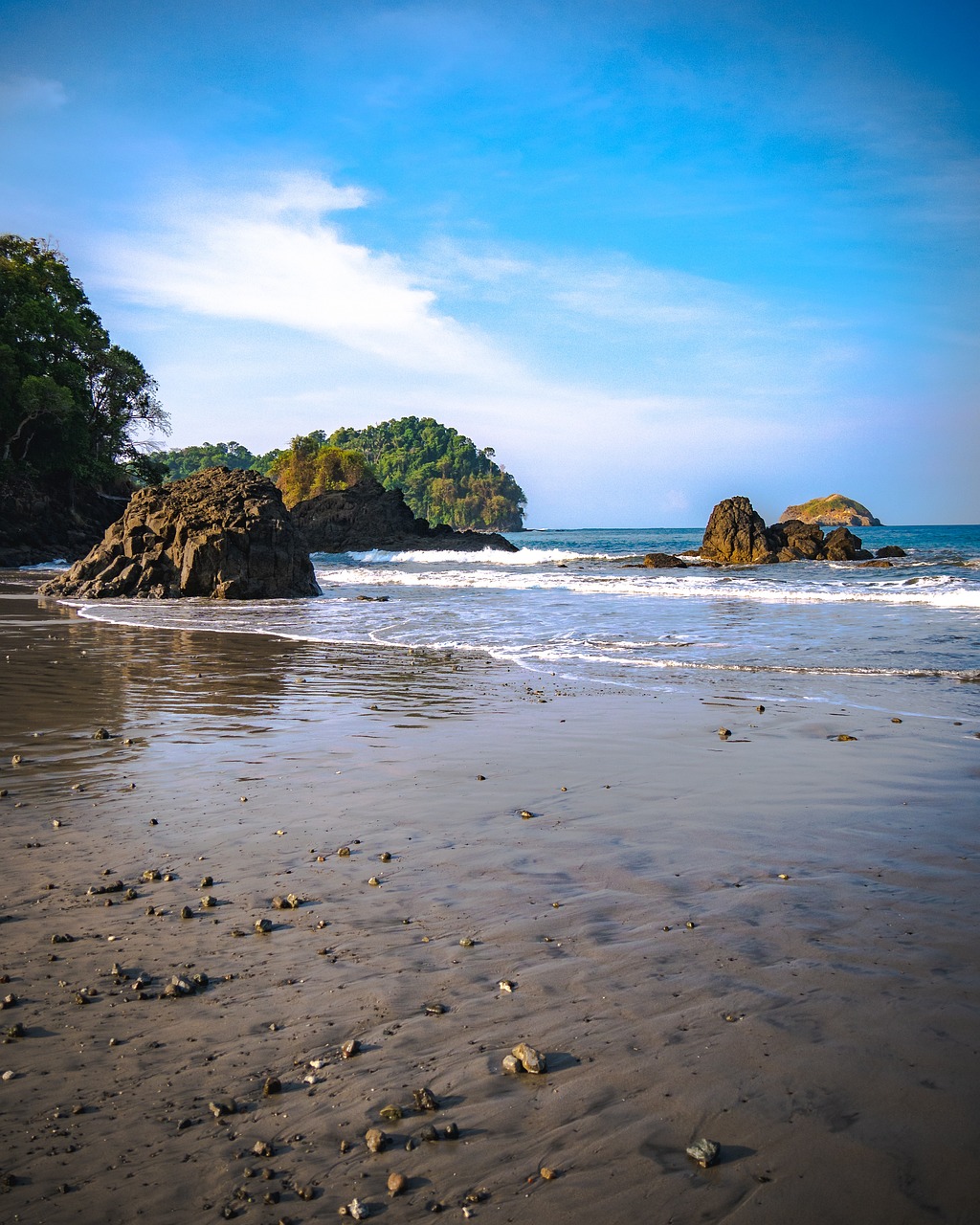
Ocean Safety
For ocean safety, always inquire about local swimming conditions and rip currents. On popular beaches, you’ll often see signs or lifeguards that indicate where it’s safe to swim. But on less-known beaches, ask the locals for guidance on where it’s safe and where it’s dangerous. The ocean here is warm and inviting, but it’s important to be mindful of rip currents and other hazards.
Lately, there have been reports of crocodiles near the ocean. While this is now a trending topic, crocodiles have always been in Costa Rica’s oceans. They usually go for fish, not humans, but if you spot one near a beach, I recommend sticking to the pool for peace of mind.
If you ever need help, don’t hesitate to ask.
Costa Ricans are generally very nice and helpful people, and there will usually be more than one person willing to assist. Whether it’s your travel agent, tour guide, or even a local, seek help when needed.
Limit how much you share about your itinerary on social media.
When you post about where you’re going, you’re not just telling your friends and family but also potentially attracting attention from people who don’t have the best intentions. It’s safer to share your travel updates after the fact.

If you’re in San José today, post the pictures tomorrow or even later, so people can’t follow your every move in real time.
Stay on trails, especially if you’re traveling solo.
In fact, this applies to everyone. Staying on the trail is the bottom line, but solo travelers need to be particularly mindful. Always let someone know where you’re going. When you’re heading out to a reserve, national park, or even just leaving the hotel, tell someone. For example, if you’re heading to the Monteverde Reserve, Manuel Antonio National Park, or the Selvatura Hanging Bridges, inform the hotel staff. This way, they’ll know where to look for you if you don’t return as expected.
In some areas, such as national parks, they may even ask for your trail route before you start, which helps search efforts if needed. In more remote places like the Osa Peninsula in Corcovado, it’s mandatory to have a guide because it can be dangerous.
There have been cases of people getting lost simply by stepping off the trail, so it’s crucial to stick to the paths. Always tell someone where you’re headed, stay aware of your surroundings, and avoid hiking alone unless you’re very familiar with the area.
Group Safety
For group safety, it’s best to stay with others at night and use taxis or Uber instead of walking in dark or secluded areas. This is just common sense. If you’re staying at a hostel and traveling solo, make friends and go out with others.

If you’re with a partner, it’s still safer to join up with others, especially when traveling on long, remote roads, like those leading to Tortuguero. Sometimes you won’t see another car for miles, so it’s good to travel in groups.
Your travel agent, tour guide, or I can always provide advice on staying safe, so don’t hesitate to ask.
In summary, the most important thing is to use your common sense. Be aware of your surroundings, stay street smart, and don’t be gullible. Costa Ricans are generally very nice, but not everyone is trustworthy. Stick to these safety guidelines, and you’ll be able to fully enjoy your trip.
Stay safe, be free, and enjoy your time in Costa Rica!
The Weather on the Caribbean Coast of Costa Rica
Understanding the weather on the Caribbean coast of Costa Rica and its patterns is essential for making the most of your visit. Join us as we talk about the climate of this stunning coastline, highlighting the best times to experience its breathtaking scenery and rich biodiversity.

In this podcast and blog, we will discuss the weather of the Caribbean coast of Costa Rica, which has contributed to its understated, underrated, and unrecognized status as an amazing off-the-beaten-track destination. areas that we can talk fully about. But today I’m here to talk about its weather.
The weather on the Caribbean coast of Costa Rica is unquestionably tropical, with a lot of rain, scorching heat, high humidity, and a lot of mosquitoes. So let me tell you a little bit about the weather on the Caribbean coast. First of all, let’s talk about seasons.

When we talk about seasons in Costa Rica, of course, we talk about the dry season and the rainy season. As most people already know, in Costa Rica and Central America, the rainy season extends from May to November, while the sunny season begins in December and lasts until early May. However, this is true around the central part of the country, the Pacific coast, and certainly the north Pacific area.
But when talking about the Caribbean, it is almost unpredictable. If you ask the locals, they will tell you that there are three seasons we can discuss: February and March, which are the sunny season. And then from April all the way to September, it will be raining and raining.

And then in September and October, the rains pause to the point that the carnival of the Caribbean coast of Limon is in October because it’s considered to be the quotations summer of the Caribbean coast of Costa Rica. However, if you take a look at the numbers, not as much. It rains as much as anywhere else.
Having said this, probably the rainiest times that I felt as a tour guide myself -and I worked for a long time in the North Caribbean area-, were in December. Also January, part of January. But December was very dramatic.
Let’s discuss the reasons for visiting the Caribbean and the optimal time to visit.
As I mentioned earlier, I aim to make this monthly guide as dynamic as possible, but you can also access it at the end of this blog.
Also, let’s talk about January.
January brings temperatures from 75 to 84 fahrenheit, which is 24 to 29 degrees Celsius. This pattern persists throughout the entire year. It doesn’t change much, so I’m going to skip it. then in terms of rain, it changes.
It goes for 7.9 inches. In February, it’s 5.9. So it makes it much lower rain in February.
If you look at March, it’s 3.9 inches of rain. Now, when we move forward to April, the rainfall increases to 5.9 inches. Still little, still not so dramatic.
May goes higher, 11.8 inches. And then, when it begins, well, actually, June is 11.8 inches, and July is 9.8. It calms down.
Good for watching the turtles. Remember, July is the month to see the turtles. And then August is 11.8.
September experiences a dramatic increase to 15.7 inches of rain. Average, same as October; super rainy. And then November goes down to 11.8.
Contrary to what I just told you, December has 7.9 inches of rain. The problem with rain in Costa Rica is that we must think about a couple of things. First of all, it doesn’t rain the whole day.

It rarely. Unless there is like a hurricane on the Caribbean or we’re getting the tail of a storm or something like that, then it may rain the whole day, but it usually doesn’t. When we’re talking about the Caribbean on the other side, it’s unpredictable.
It’s just unpredictable. You just never know. In my experience, whenever there is a cold front from the north, we’ll get a lot of rain.
When there is a hurricane, we’ll get a lot of rain. When there is a tail of a storm, we’ll get a lot of rain. The good news here are many on the other side.
First of all, nature benefits from rain. Rain makes nature lush, beautiful, and extremely biodiverse. So this is a place where nature is thriving.
It’s amazing. It grows everywhere. It’s unstoppable.

And this lusciousness makes it an ideal destination for any nature lover, anyone who truly loves to see nature in its essential state.
At its very core, this is tropical nature at its best. Either you make it into Tortuguero in the northern Caribbean with the canals and you go by boat or by kayak into the rainforest, or either you go to the south and you go to Cahuita or Puerto Viejo, Cocos, or Manzanillo.

In all of these regions, you will witness a lot of wildlife; you will witness huge trees and amazing buttress roots. Furthermore, these regions have a distinct culture from the rest of the nation. That is completely worth it to pay a visit to it.
I’m going to get into all of this later on in this same series. I just want you to acknowledge that the rain is, in fact, warm. It’s not like you get wet and you’re freezing.
No, you’ll get wet, and you’ll like it. It’s. It’s fun, mostly.
All the time. It is just a lot of fun. So don’t get scared by the rain.
The pouring tropical rain is just an amazing thing to behold, and I think Costa Rica is blessed by having so much rain.
So, enjoy the rain and don’t let it scare you off. From the Caribbean coast of Costa Rica, it may rain, and I hope it does.
It is an amazing thing to watch. So enjoy whatever you’re doing now. Enjoy wherever you are, enjoy the now, and have a great present moment.
Bye. Take care. Pura Vida.
The Caribbean Coast Weather Month to Month:
| Month | Temperature | Rainfall | Humidity |
| January | 24-29°C (75-84°F) | Low (approx. 200 mm / 7.9 in) | High (around 85%) |
| February | 24-30°C (75-86°F) | Low (approx. 150 mm / 5.9 in) | High (around 85%) |
| March | 25-31°C (77-88°F) | Low (approx. 100 mm / 3.9 in) | High (around 85%) |
| April | 25-32°C (77-90°F) | Moderate (approx. 150 mm / 5.9 in) | High (around 85%) |
| May | 24-31°C (75-88°F) | High (approx. 300 mm / 11.8 in) | Very high (around 90%) |
| June | 24-30°C (75-86°F) | High (approx. 300 mm / 11.8 in) | Very high (around 90%) |
| July | 24-29°C (75-84°F) | Moderate (approx. 250 mm / 9.8 in) | High (around 85%) |
| August | 24-29°C (75-84°F) | High (approx. 300 mm / 11.8 in) | Very high (around 90%) |
| September | 24-29°C (75-84°F) | Very high (approx. 400 mm / 15.7 in) | Very high (around 90%) |
| October | 24-28°C (75-82°F) | Very high (approx. 400 mm / 15.7 in) | Very high (around 90%) |
| November | 24-28°C (75-82°F) | High (approx. 300 mm / 11.8 in) | High (around 85%) |
| December | 24-29°C (75-84°F) | Moderate (approx. 200 mm / 7.9 in) | High (around 85%) |
The Caribbean Coast of Costa Rica: An Introduction
The Caribbean Coast of Costa Rica is an underrated and breathtaking destination, rich in experiences and adventure. It embodies the essence of “Pura Vida,” showcasing vibrant biodiversity, colors, and a joyful lifestyle. This region is a sensory delight, filled with unique music and coconut-flavored cuisine, shaped by a resilient culture and history. The Limón Province, named after a former lemon plantation, serves as a crucial gateway for exports, especially after the Panama Canal’s construction.
Geographically, it features 212 kilometers of flat shoreline with rough waters and includes beautiful rainforests in the north, ideal for witnessing sea turtle nesting. With a population of nearly 400,000, the Caribbean Coast offers unforgettable experiences waiting to be discovered.
Tipping in Costa Rica
When it comes to tipping in Costa Rica, it’s crucial to understand the tipping culture to know what to anticipate and how much cash to carry.
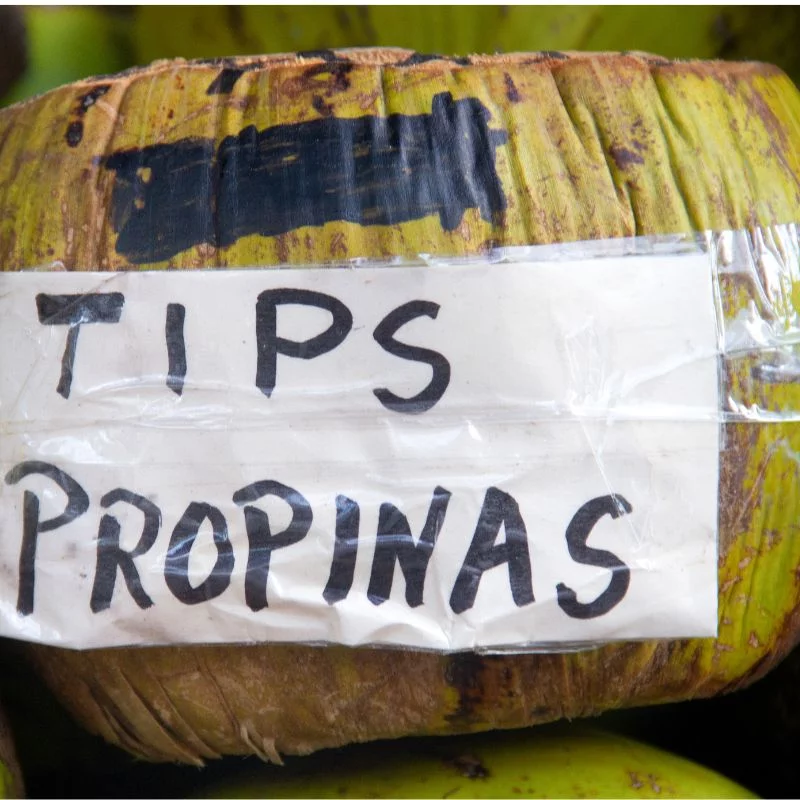
Tipping in Costa Rica has slowly become part of our touristic culture, with all the influence we get from the U.S. But it is important to note that by law in Costa Rica, there is a 10% service charge included in all our bills. However, Costa Ricans usually smile and please people as a part of who we really are.
However, since 1990, when tourism burst as the primary industry and it generalized all over the country, tipping has become part of our day-to-day lives.
Little by little, people have been developing the habit, but it is essential to realize that you are already paying ten percent of your bill, and legally, the owners of the businesses have to give the cash to the whole team, and they will share it.
Nevertheless, although entirely voluntary, gratuities in Costa Rica, especially in the tourism industry, are well received and appreciated.
The tipping etiquette in Costa Rica for visitors is that it is never necessary but always appreciated. Especially considering Costa Rica’s minimum salary is low, the tourism business has been closed due to the epidemic.
Tipping in Costa Rica: Do You Use Dollars or Colones?
You can tip in Costa Rica’s colones or US dollars. Locals routinely take US dollars, preferably as the currency rate changes almost every day, and for many of them, tips are a usual source of income.
You will find a tips box in some tours and areas, and these are gratuities shared among the whole team.
Other currencies, such as Canadian Dollars, Euros, or British Pounds, will be extremely hard to change in our banking system.
Restaurant Tipping Culture in Costa Rica
The service tax, also referred to as a gratuity or tip charge, is something that restaurants in Costa Rica are required to include in their menu prices by law. The sales tax is 13%, while the service fee (tip) is 10%.

However, some restaurants do not include taxes in their menu pricing and will put “taxes not included” or “impuestos no incluidos” anywhere on the menu. If neither tax is included, expect to pay an additional 23 percent on top of the menu price. If just service tax is not included, it is an additional 10%.
Restaurants will indicate this somewhere on the menu if all taxes and tips are included.
Some establishments in more touristy places may give you an extra receipt with a tip section. You don’t have to tip more if you don’t want to, since you’ll pay an additional 23 percent on top of your bill.
Tip Etiquette in Costa Rica when talking about tour guides
Some tour operators will provide tip boxes (especially on adventure tours). Again, this is entirely optional. You can tip in either USD or CRC, and the amount will be shared by the whole team, including drivers, and sometimes they even cook.

If you think they did a good job, feel free to tip 10% of your tour rate—or more. And if you find someone in the team that you want to gratify, especially, our suggestion is to call her or him apart.
If you hire a private driver who speaks English and escorts you around, we recommend tipping 10% or more.
Taxi Tipping
Tipping taxi drivers is not customary in Costa Rica. And on Uber, the app asks you about it.
Hotel Maid Tipping Etiquette in Costa Rica
We usually try to leave something for the maids because they don’t make much money here. You can leave around US$ 2 per day.
Informal parking “guards.”
You can find them in many places, wearing orange vests. They’ll approach your automobile and bill you for parking while claiming to “watch your car.” However, it is crucial to emphasize that they are not official and do not own the parking lot. Furthermore, they lack insurance and will not be held liable if anything happens to your car or valuables.
They can also be quite pushy in trying to convince you to park in “their area.” They can also charge foreign visitors exorbitant fees to park in their area during the holidays, although they’re not even official parking guards or insured. This is especially true in popular tourist destinations such as Manuel Antonio National Park and Tamarindo Beach.
Finally, if at all possible, we avoid parking in unapproved areas. Unfortunately, most parking in Costa Rica is unauthorized, so our recommendation is to pay them afterward.
Some ideas for tipping in Costa Rica:
- Tipping in coins is considered bad taste, and they may even return it to you. Not a good idea.
- If you are going with a guide or driver for several days, an envelope with a small note will be much appreciated.
- Checks are extremely hard to cash for Costa Ricans. Be prepared with cash.
- Recognize that Costa Rican banks won’t accept torn or stained bills.
To wrap it up,
Tips in Costa Rica are not only accepted but also encouraged. However, we completely recognize that all jobs in Costa Rica are paid, and tips are always a voluntary extra that our visitors give to show appreciation for a job well done.






 The Travel Industry in February in Costa Rica
The Travel Industry in February in Costa Rica